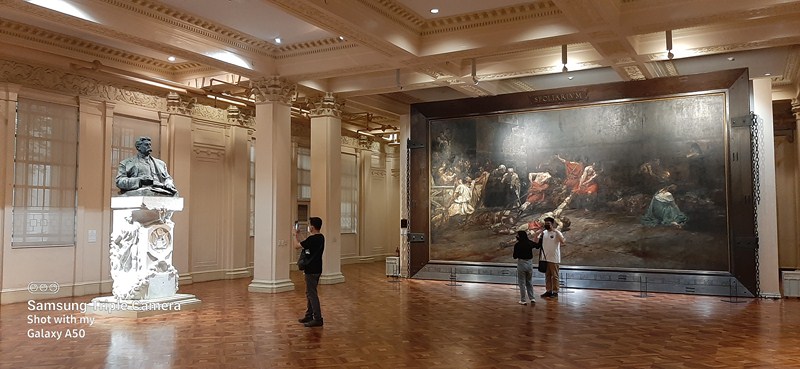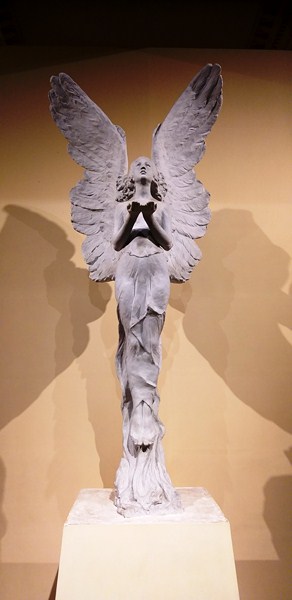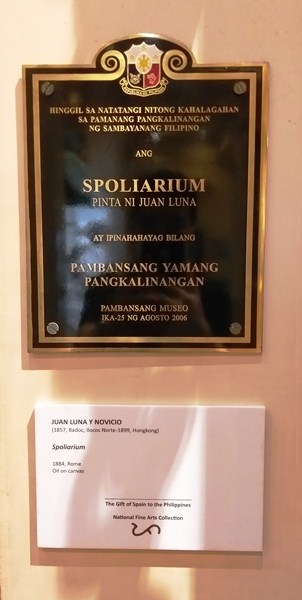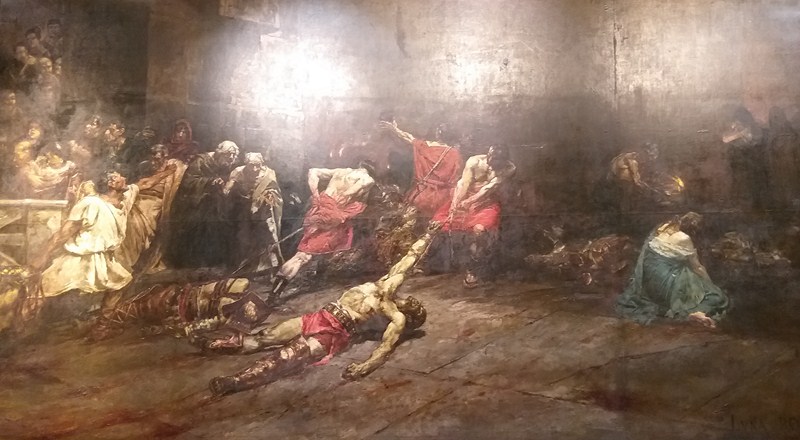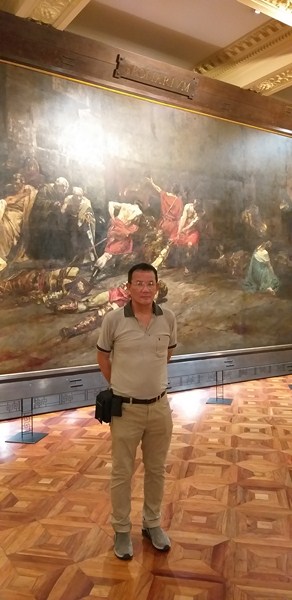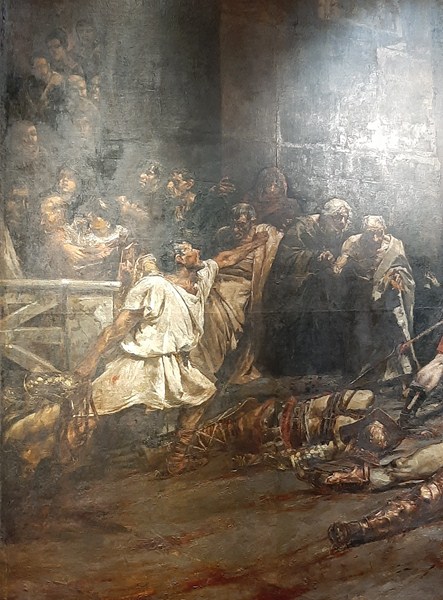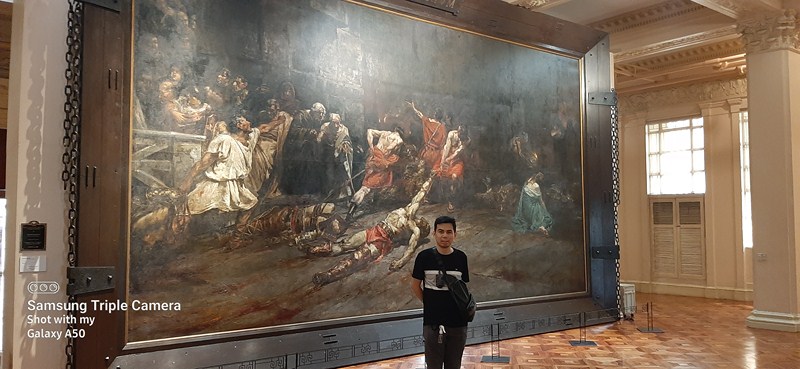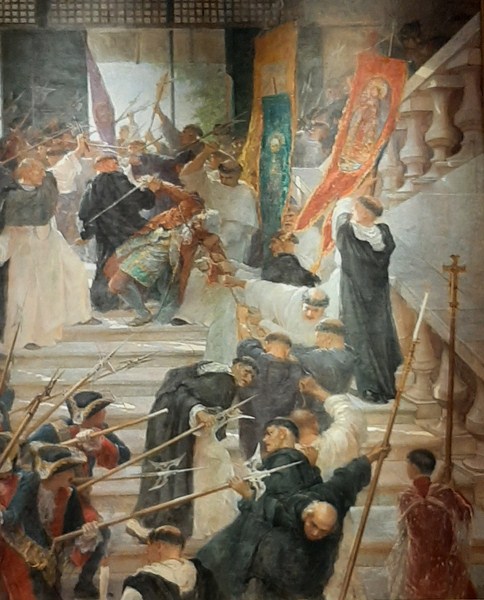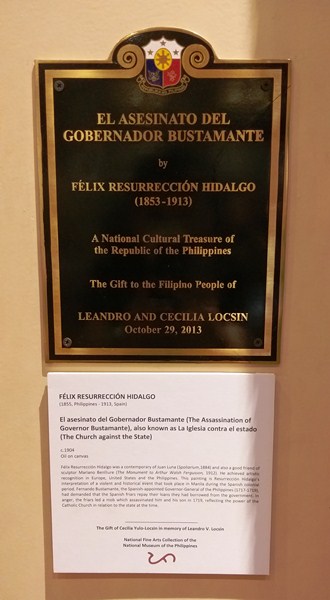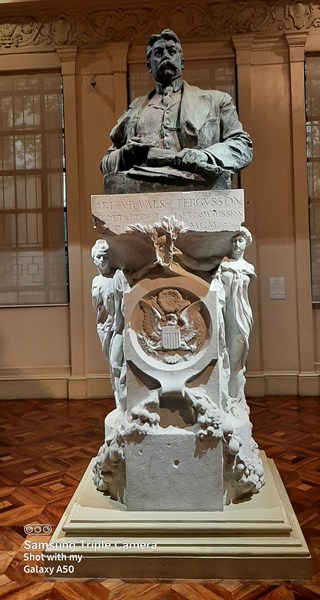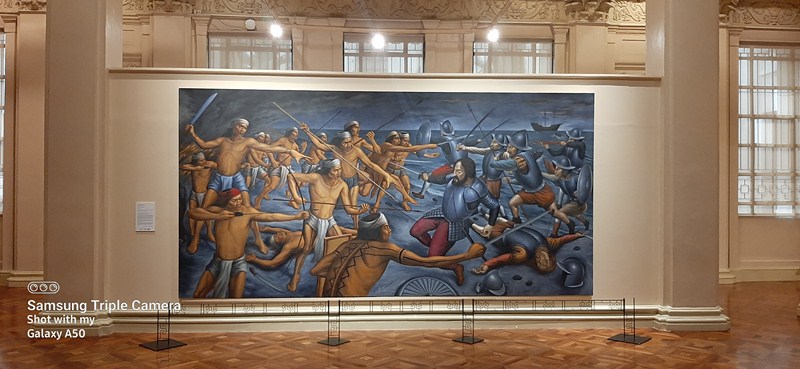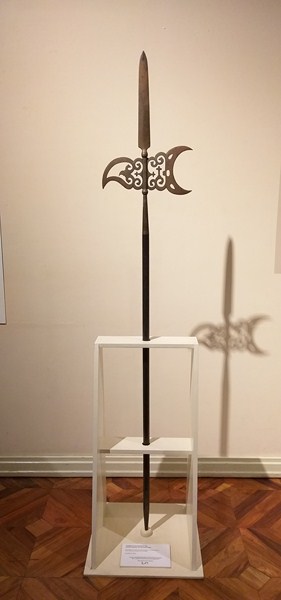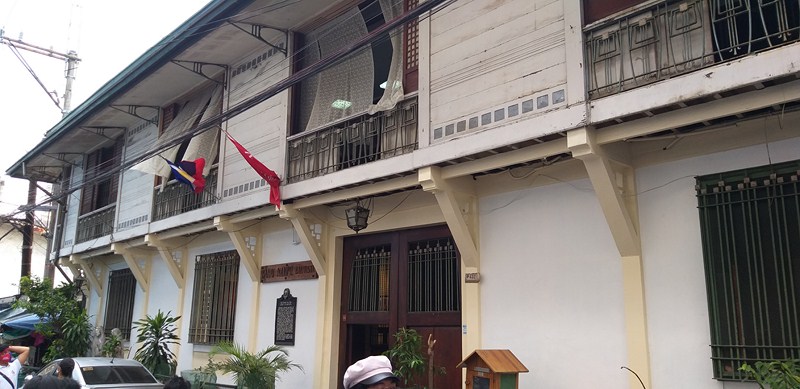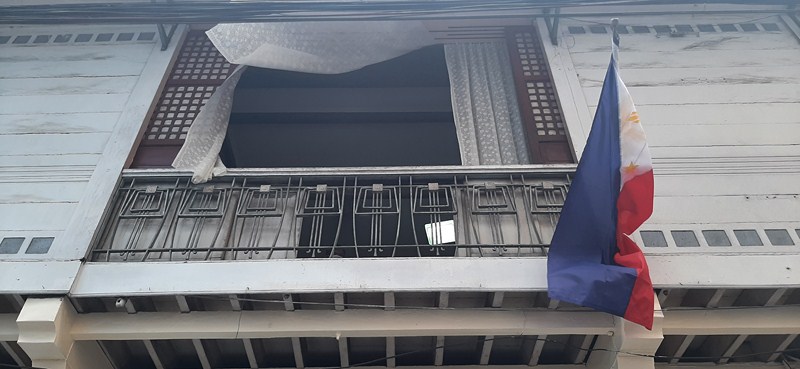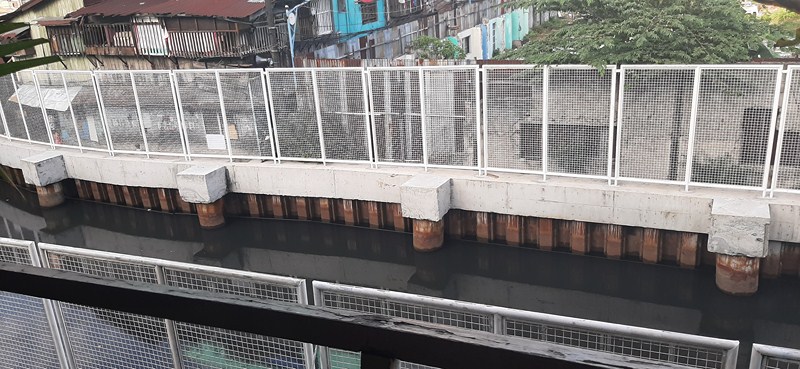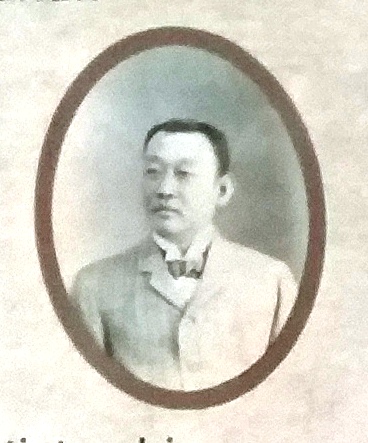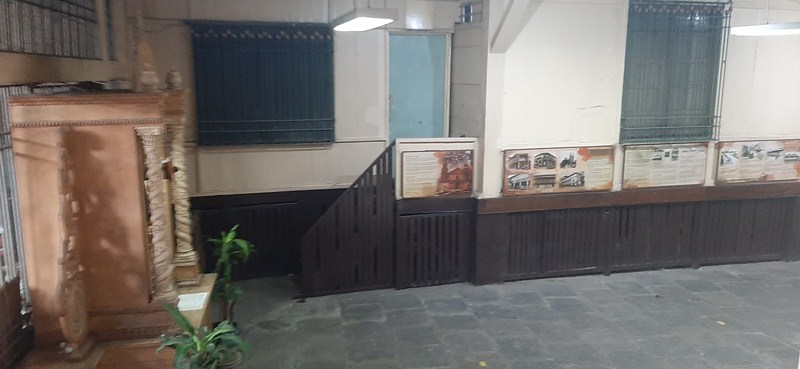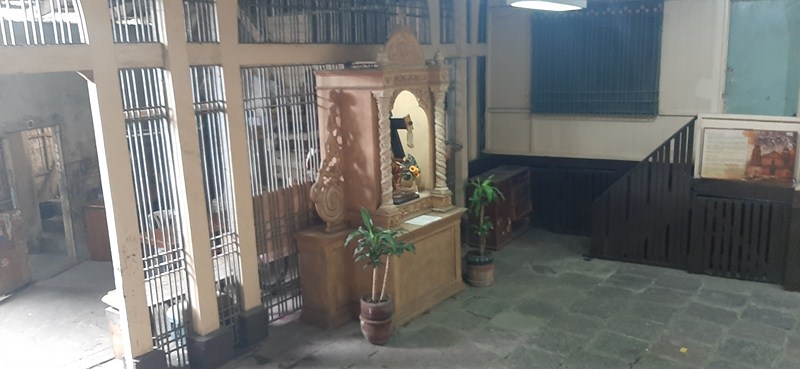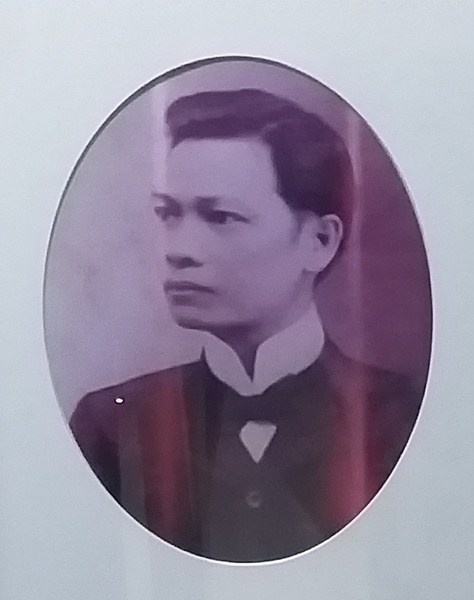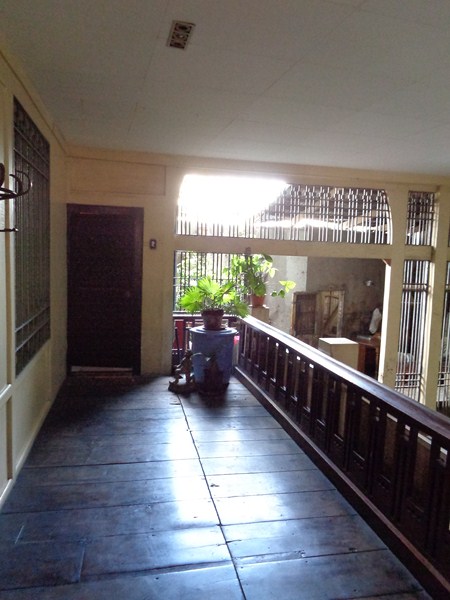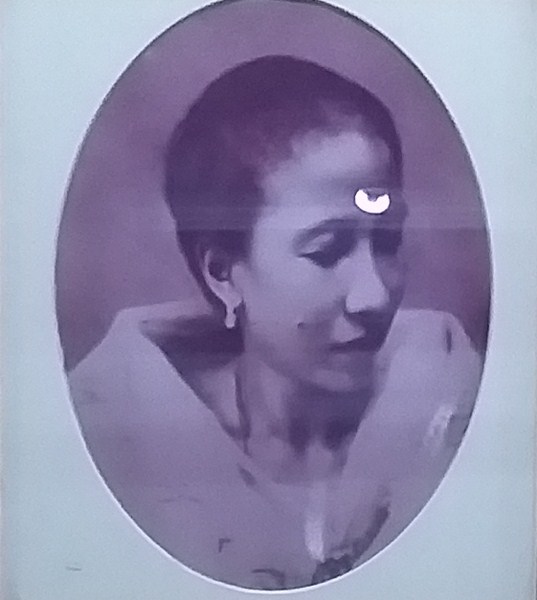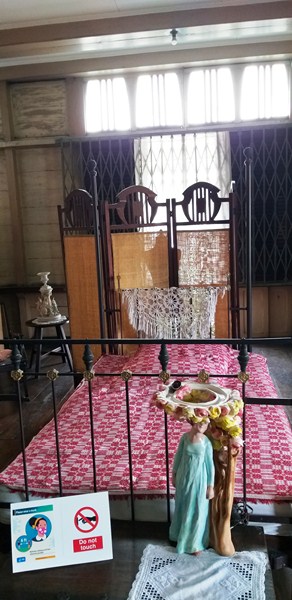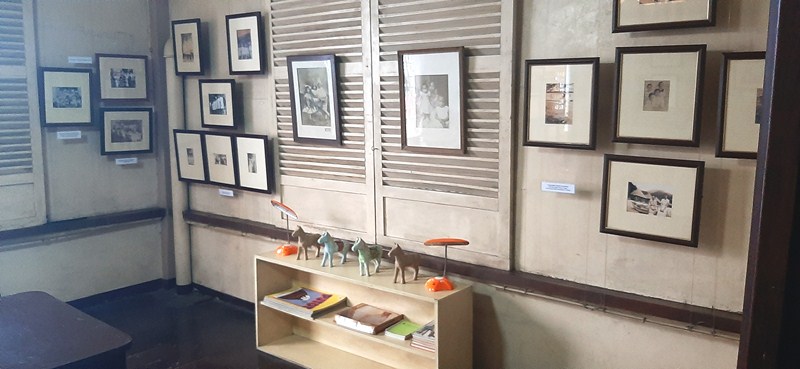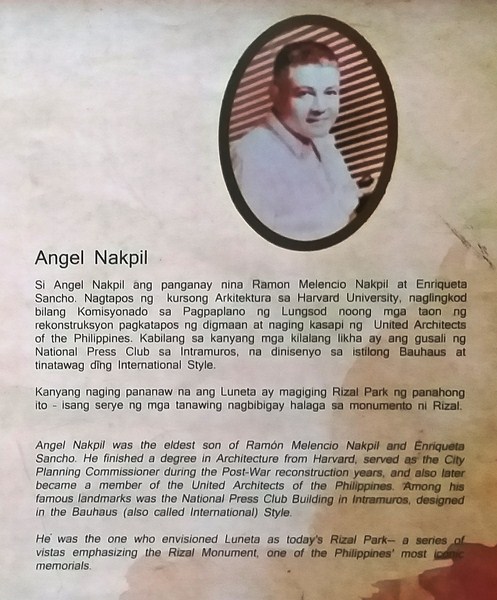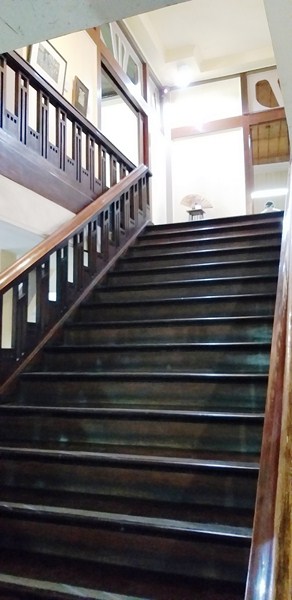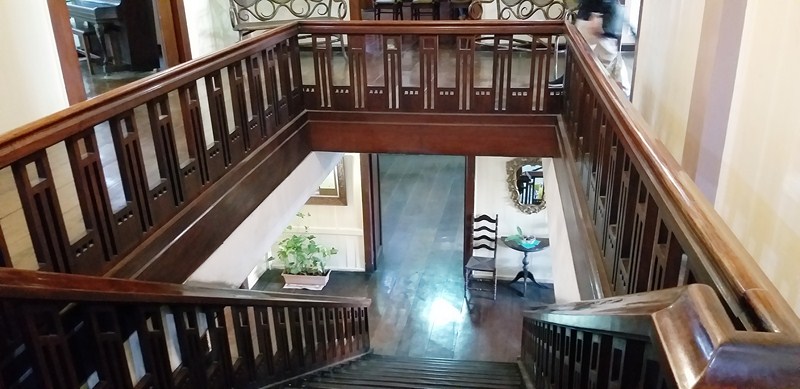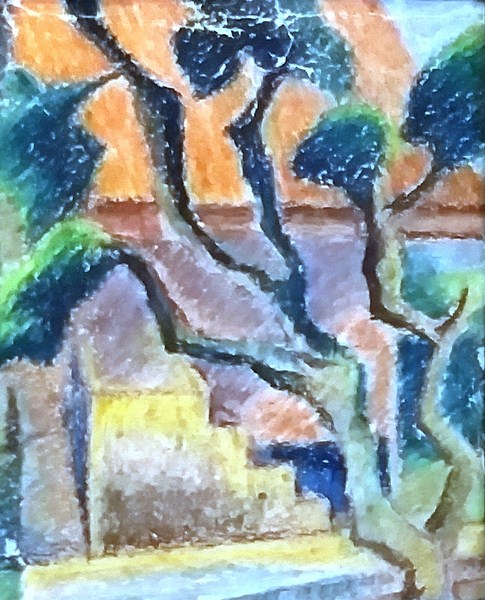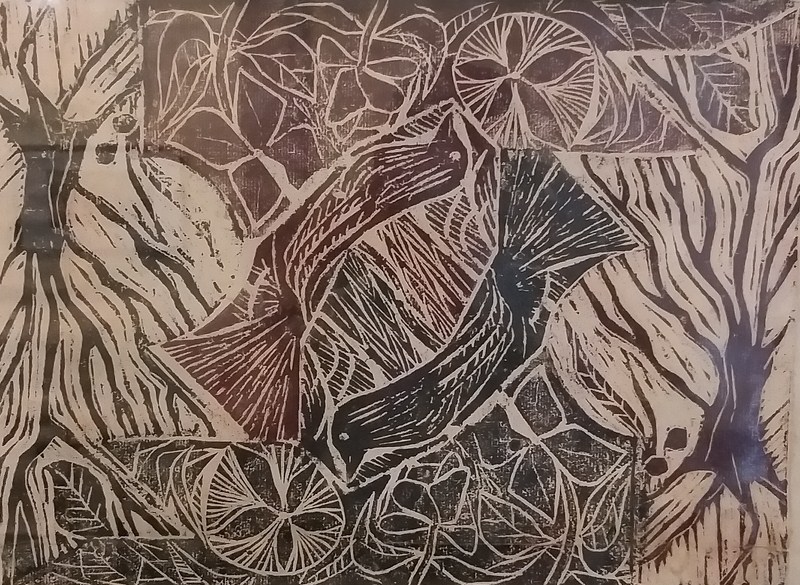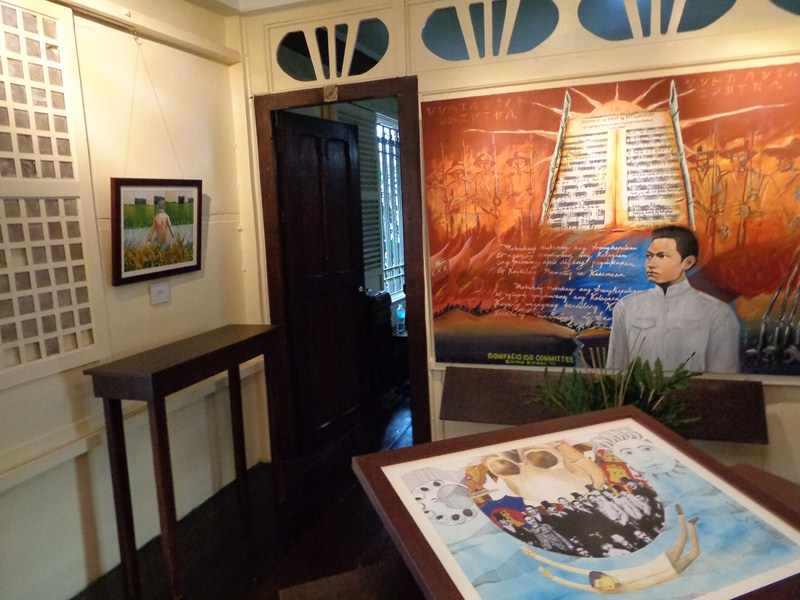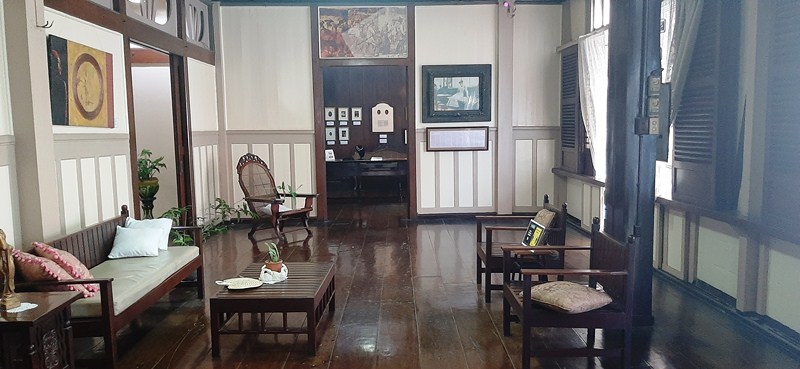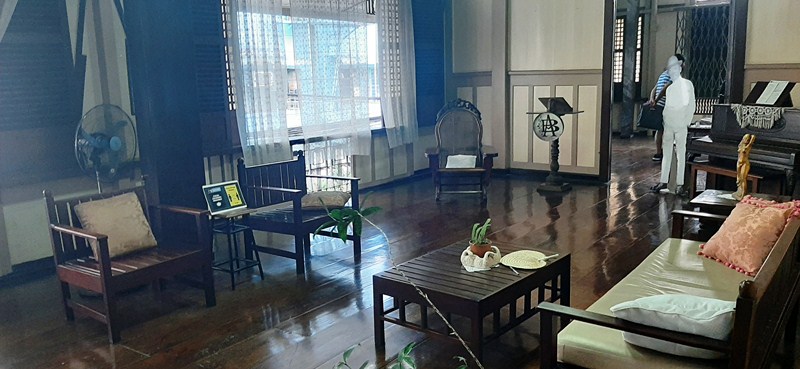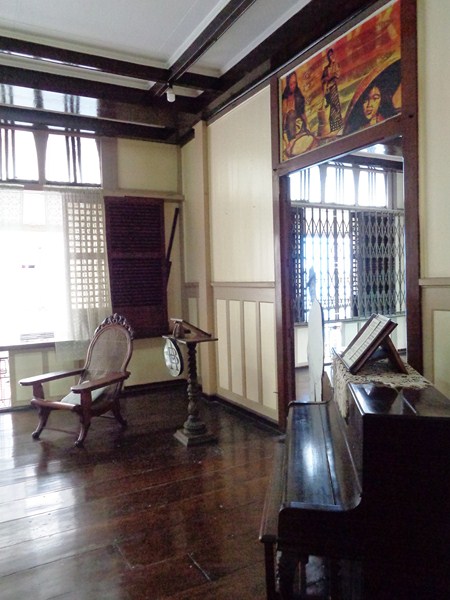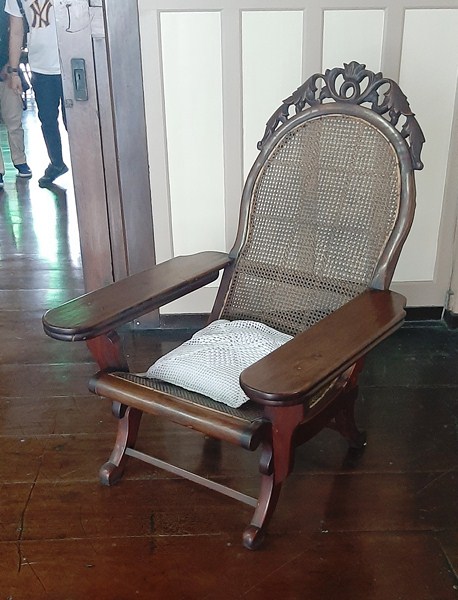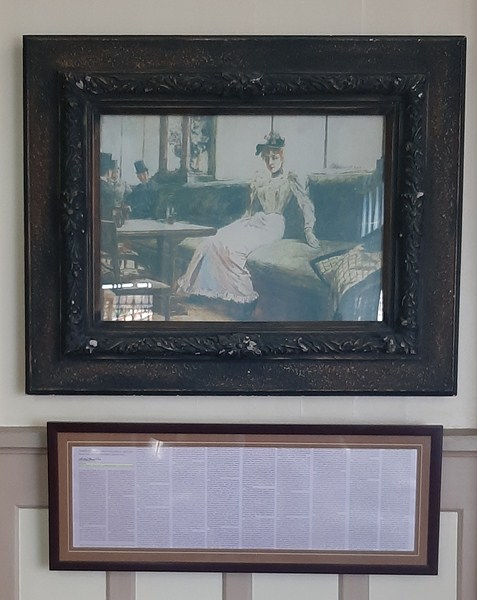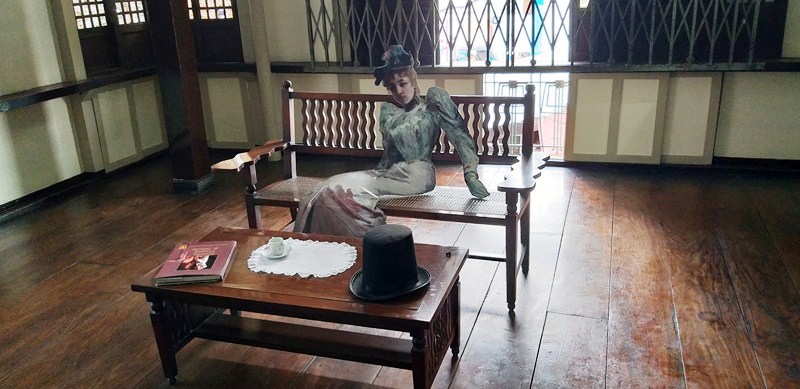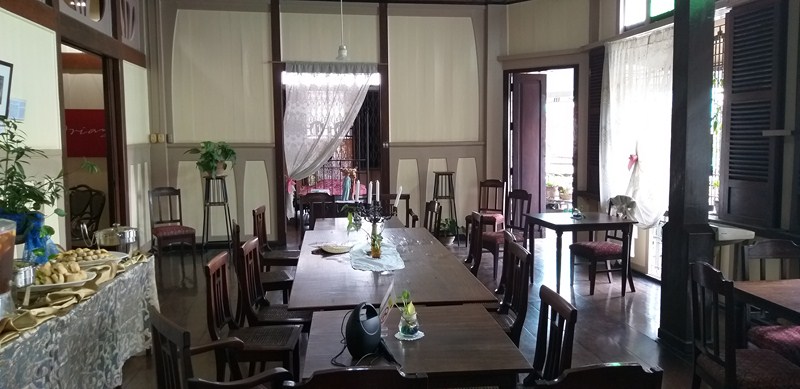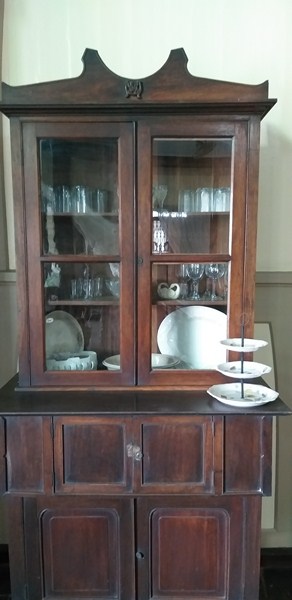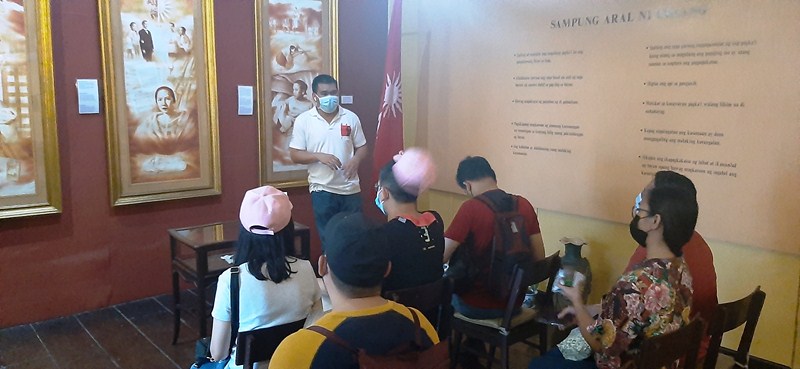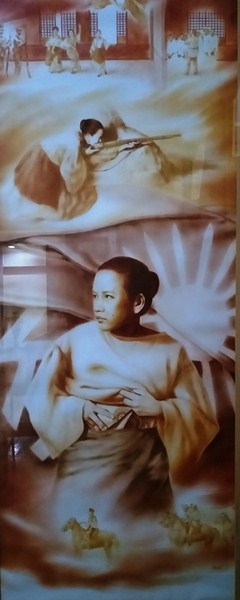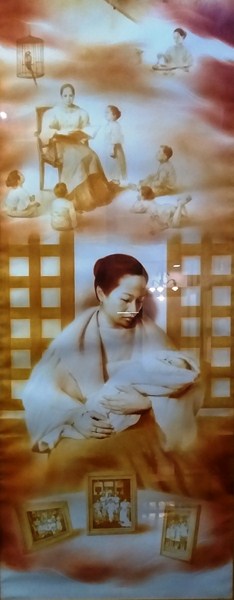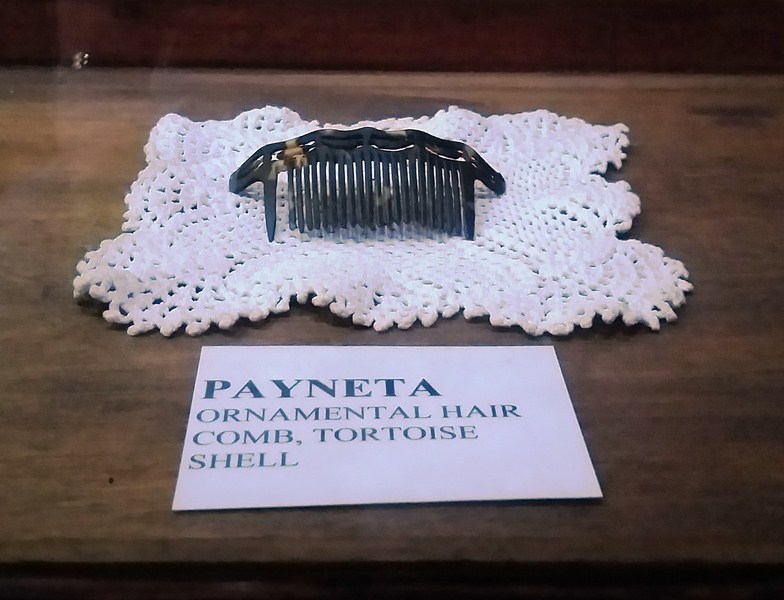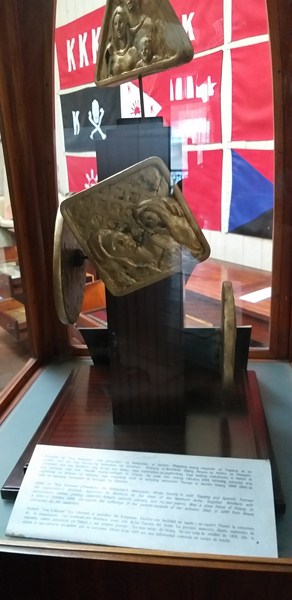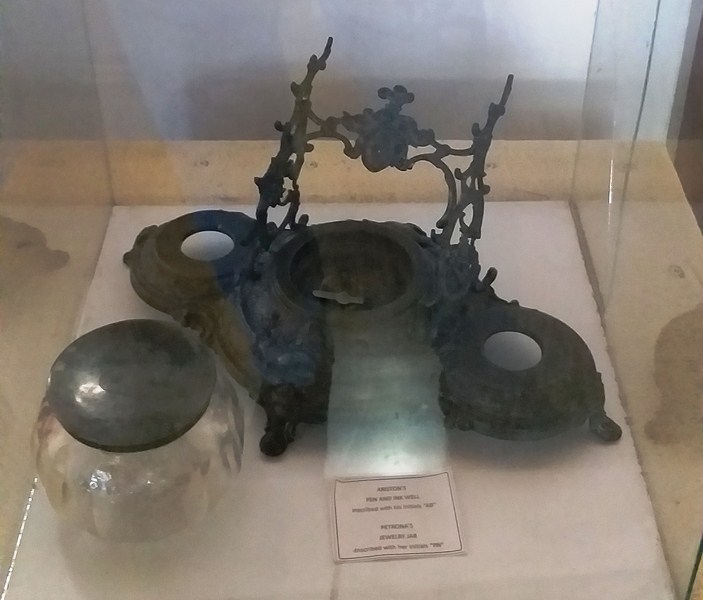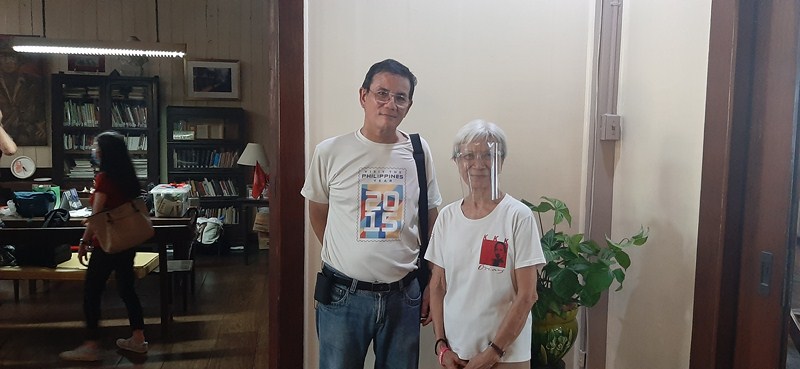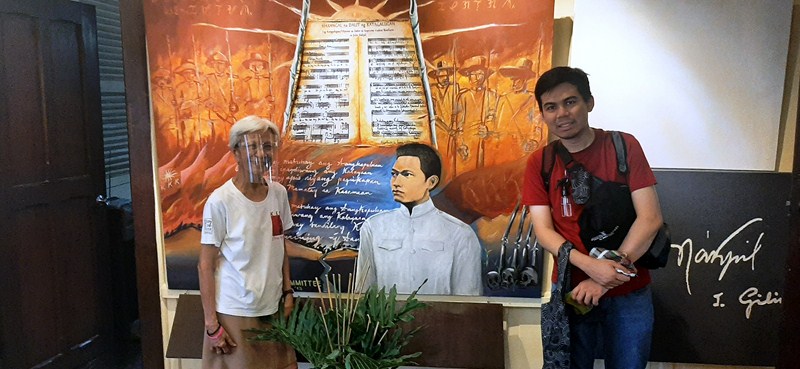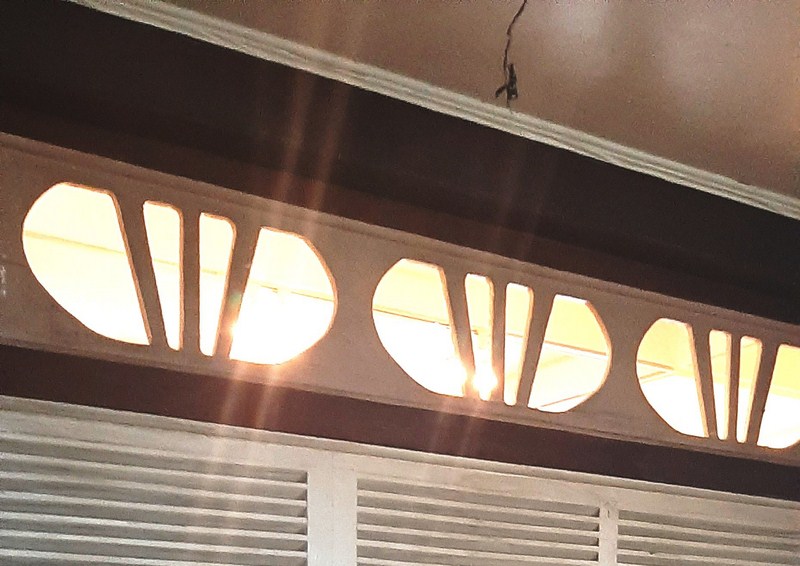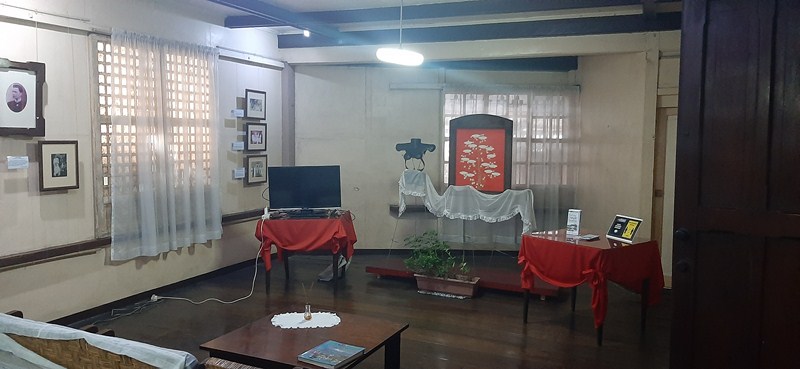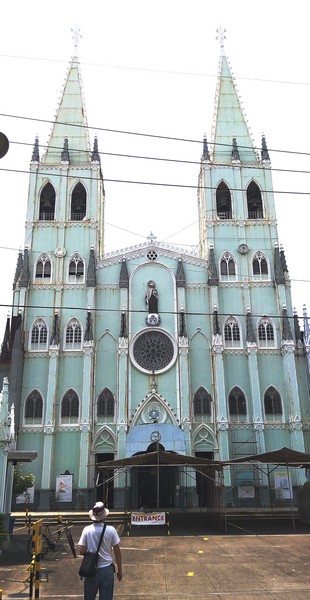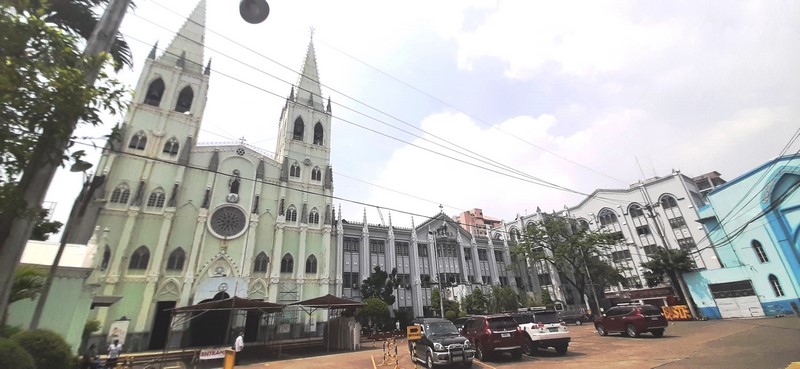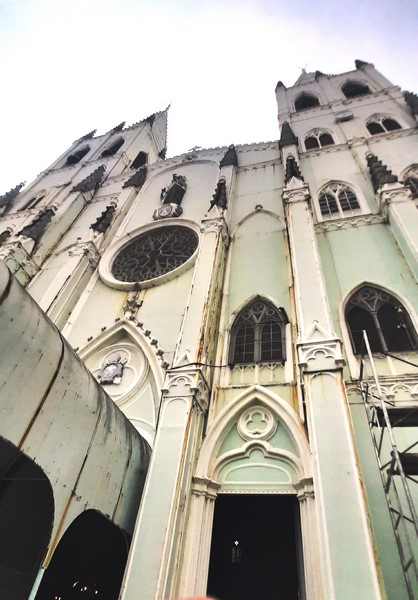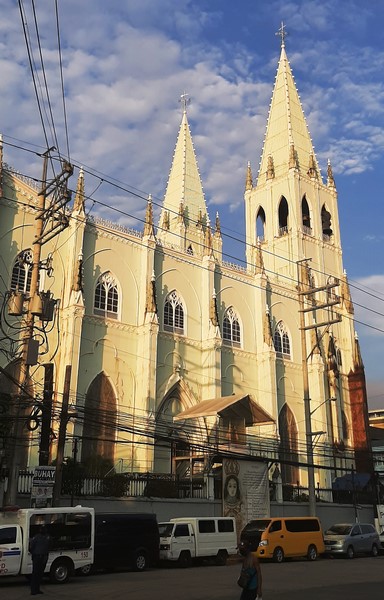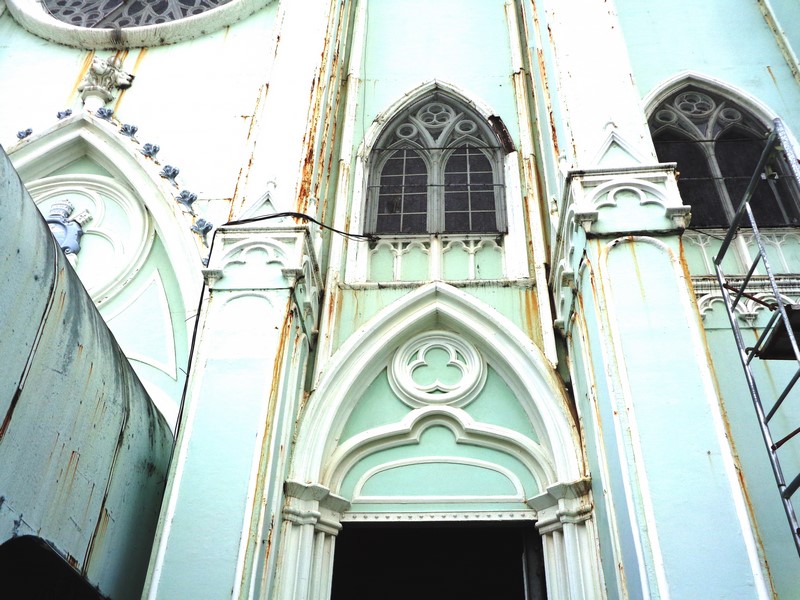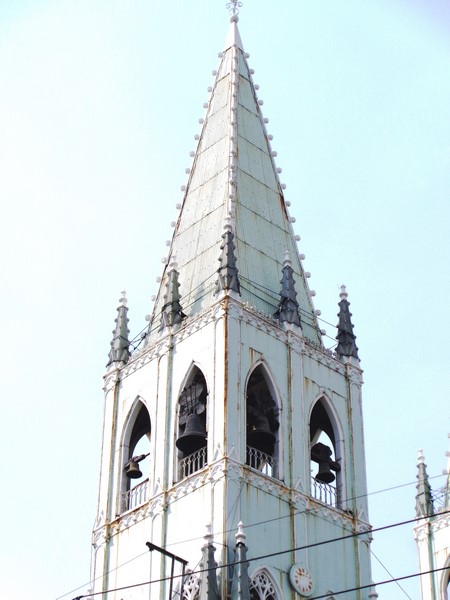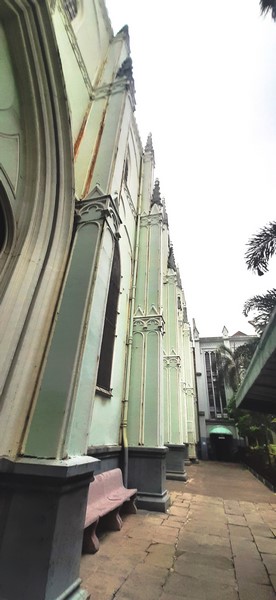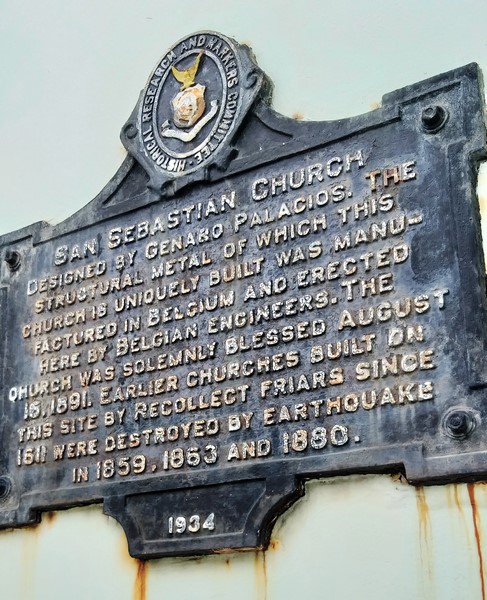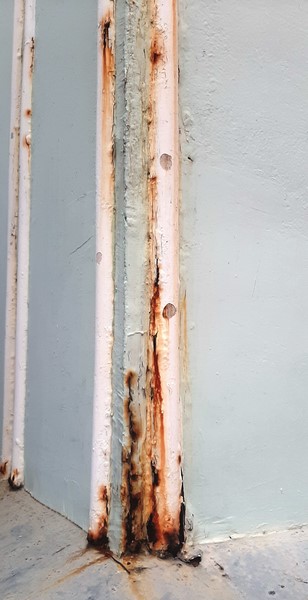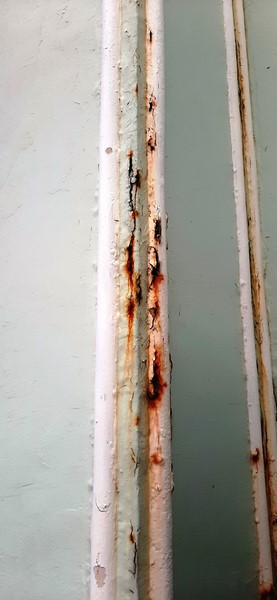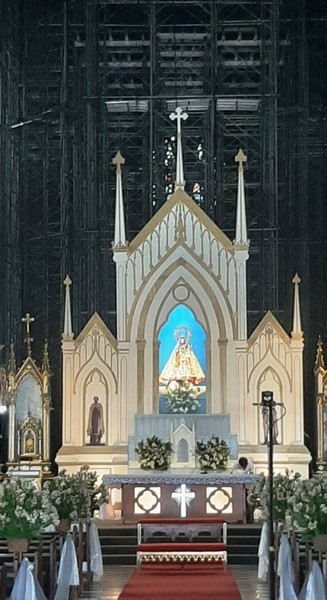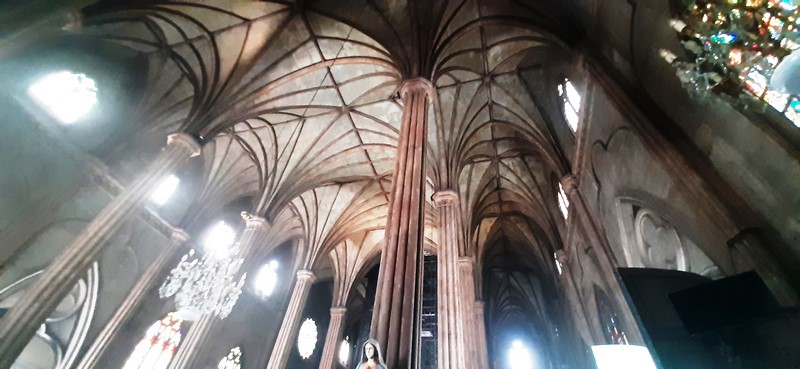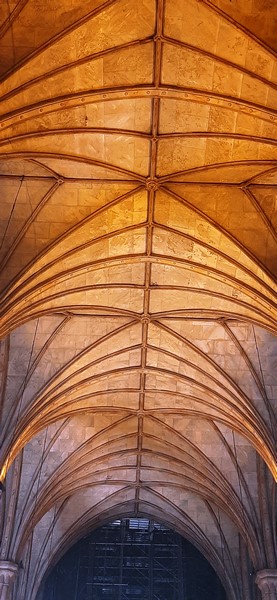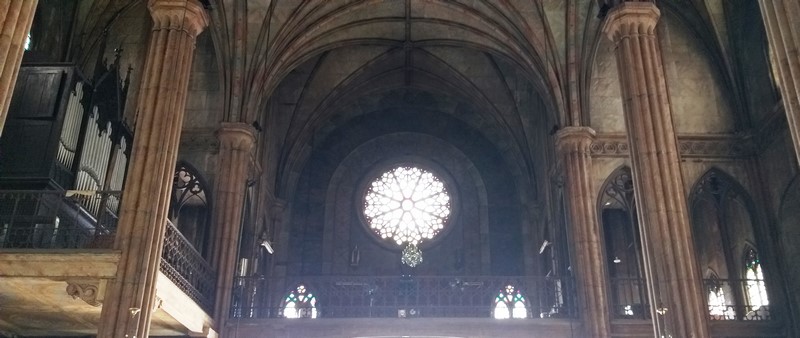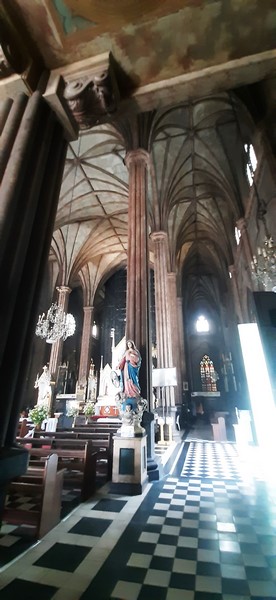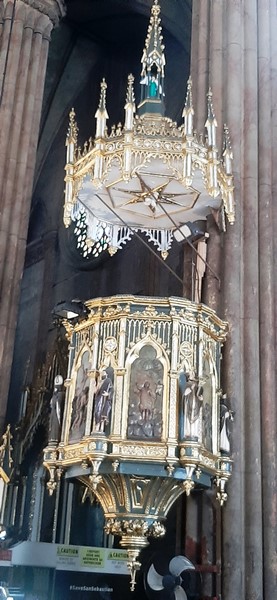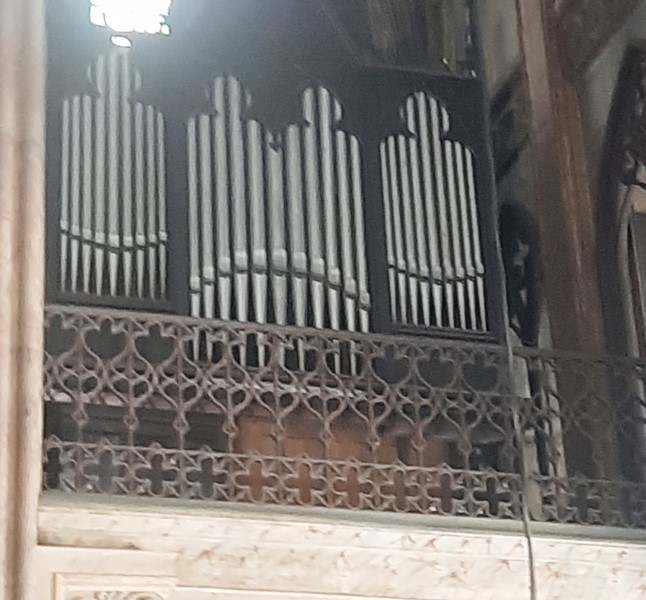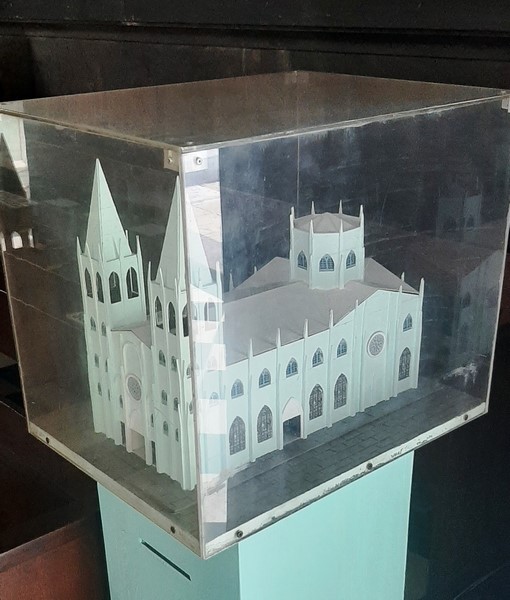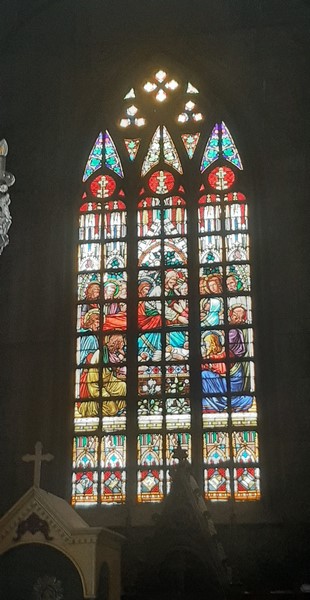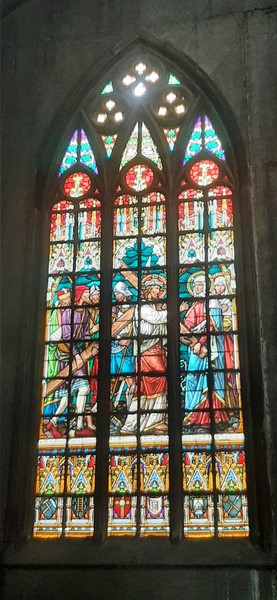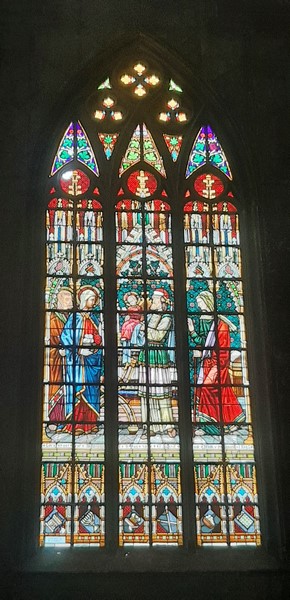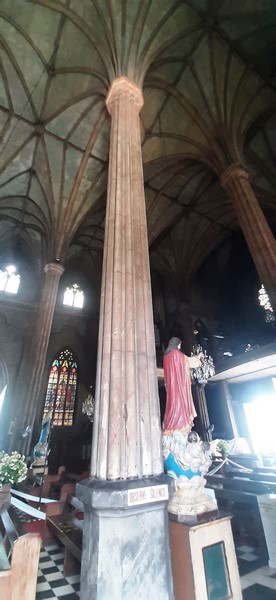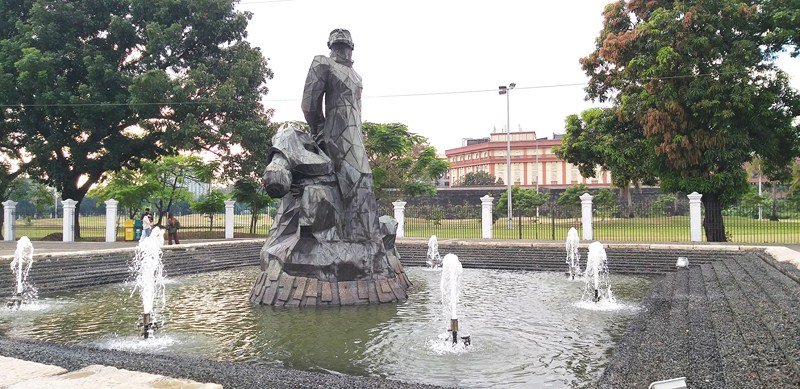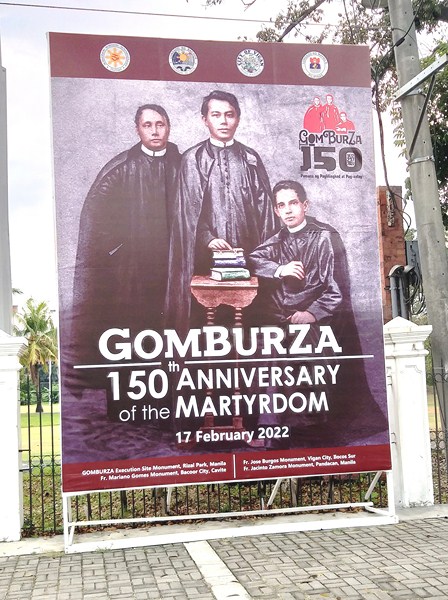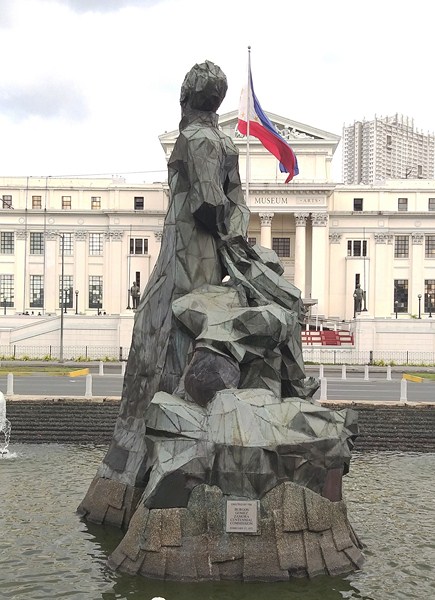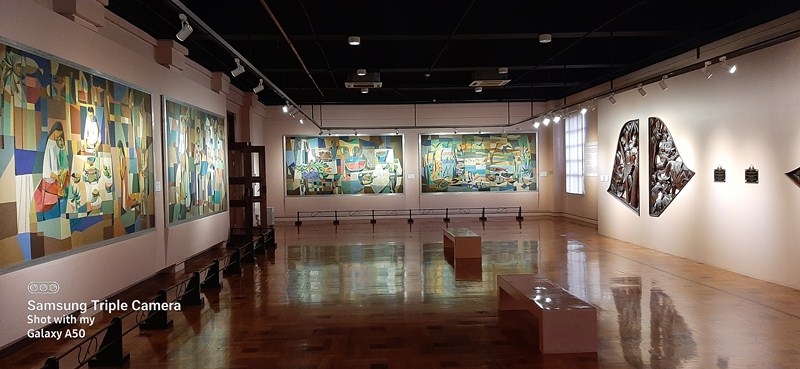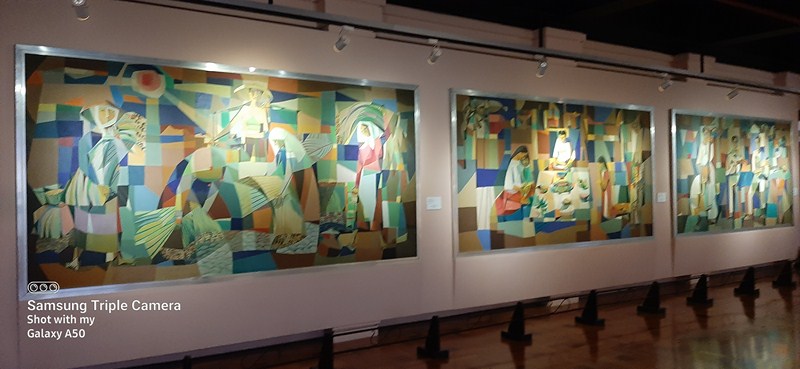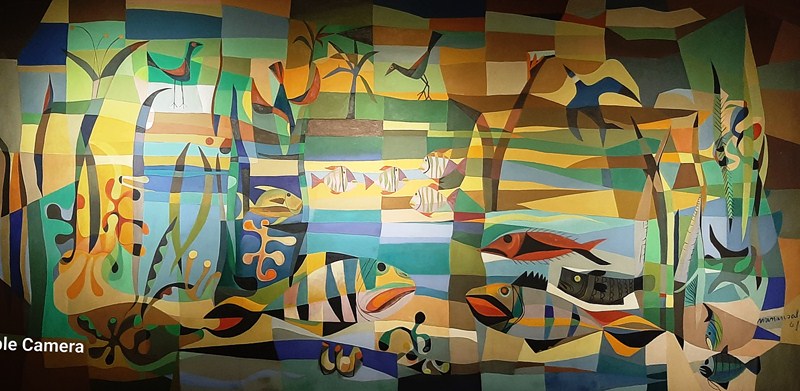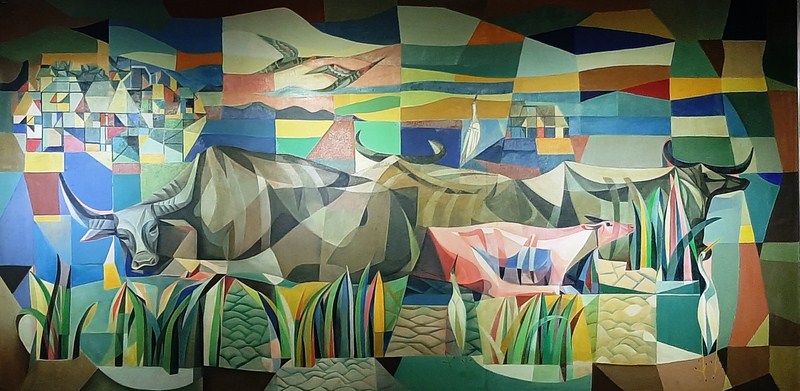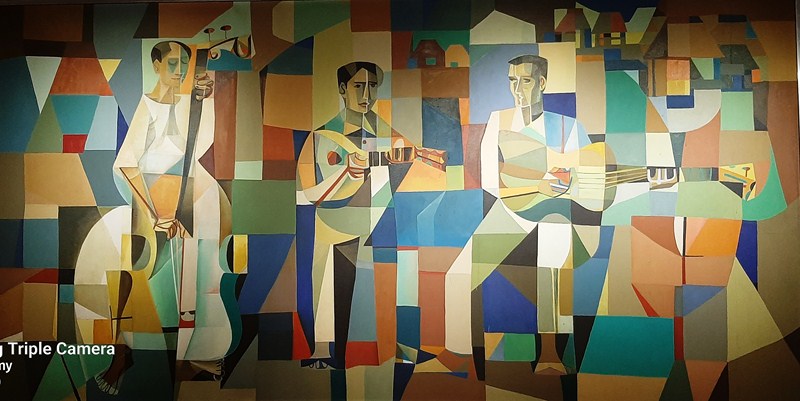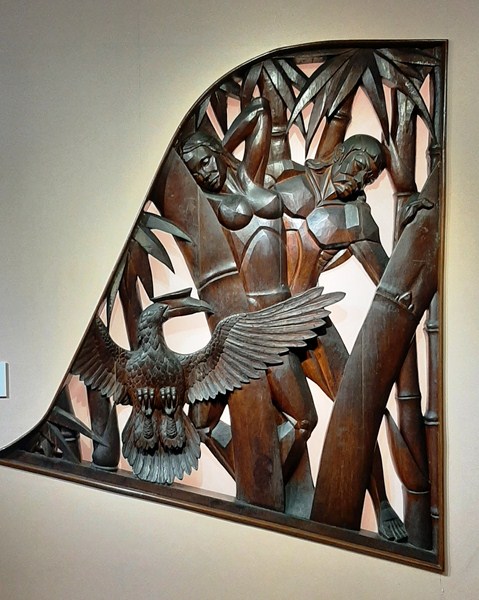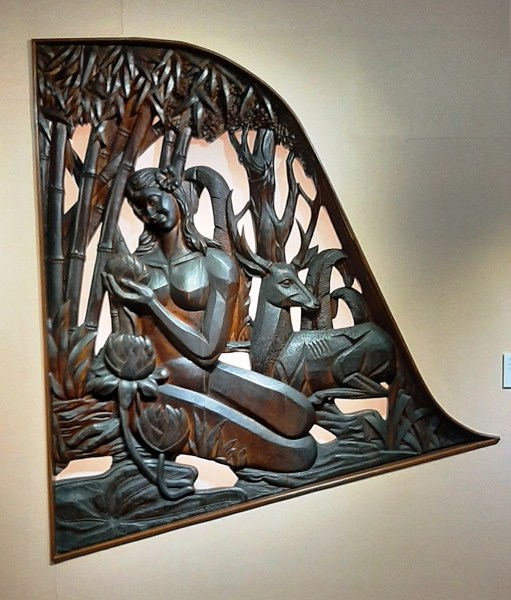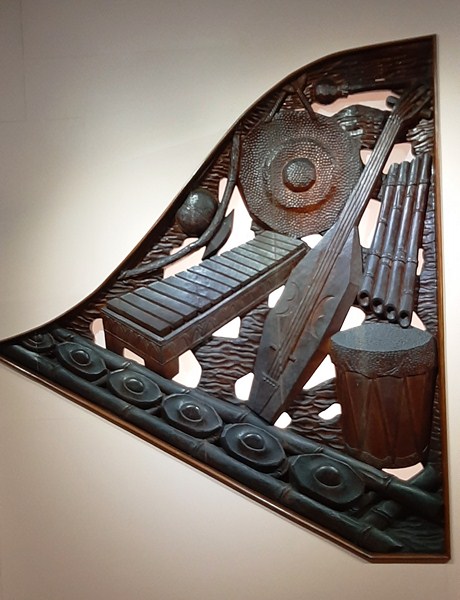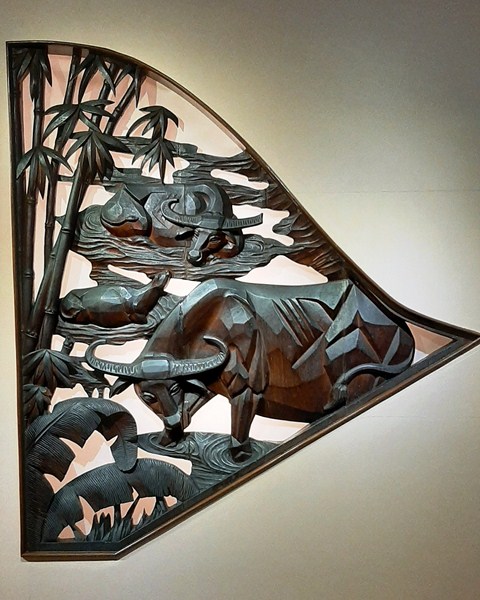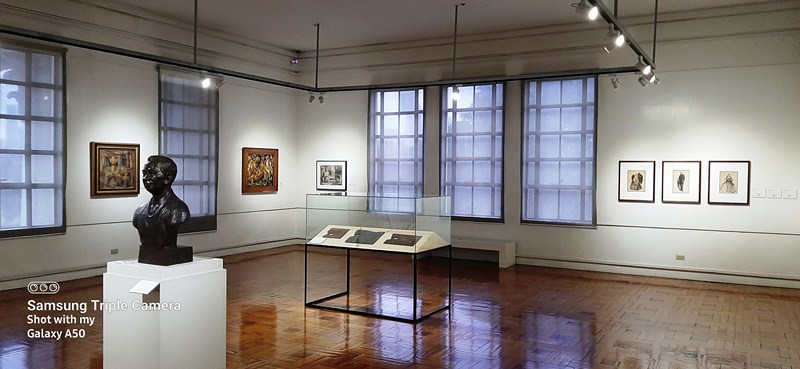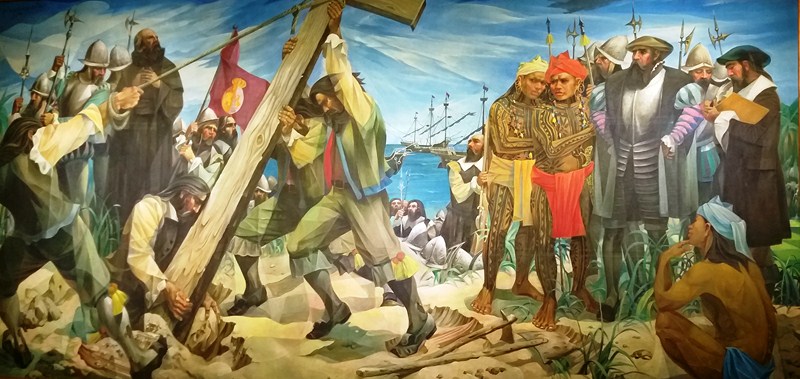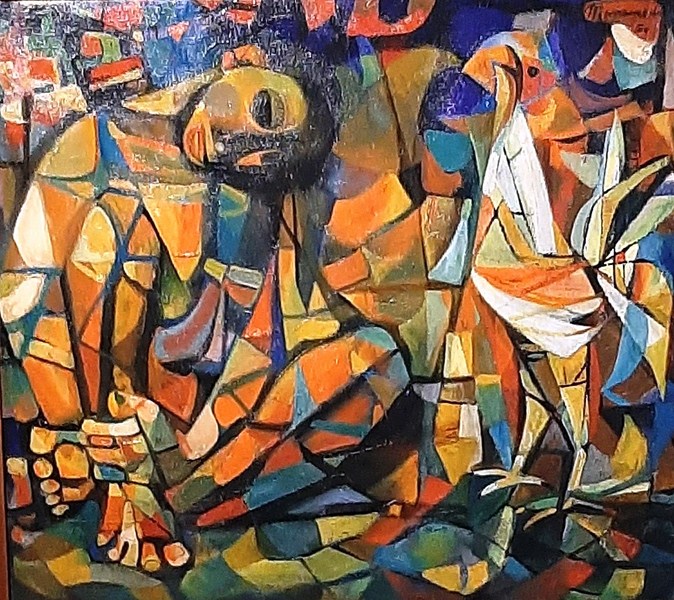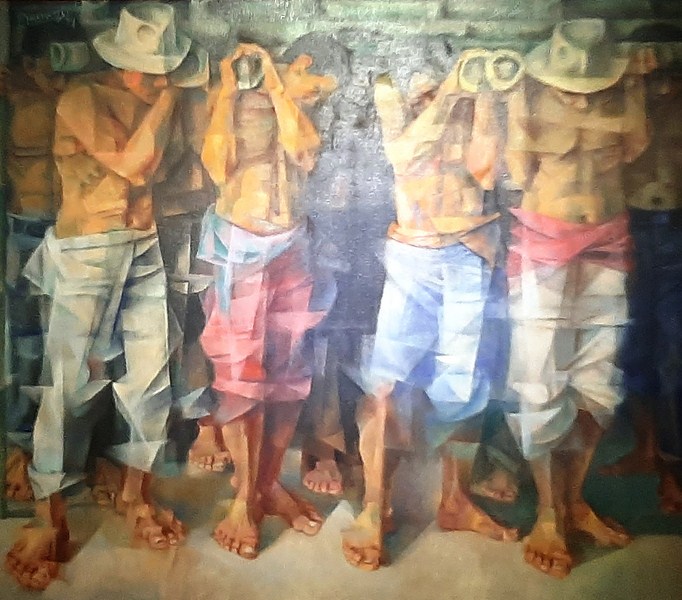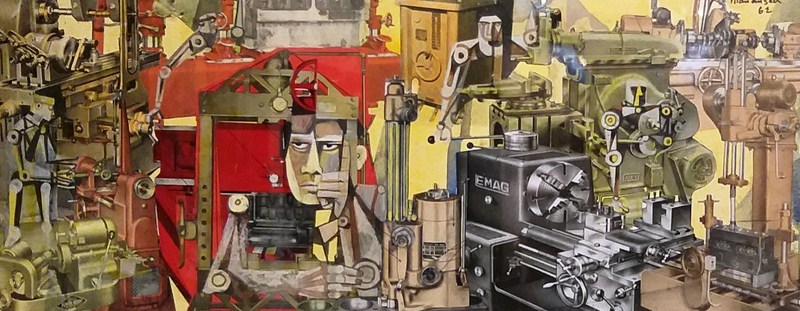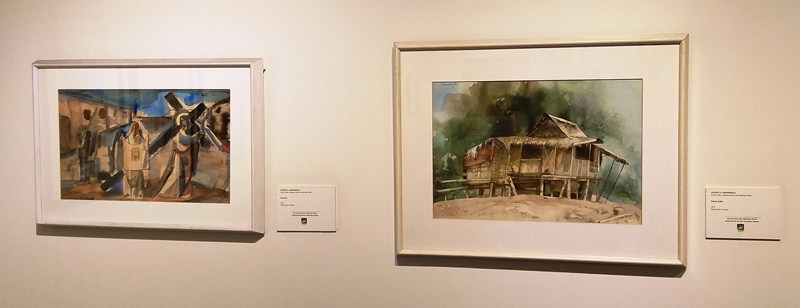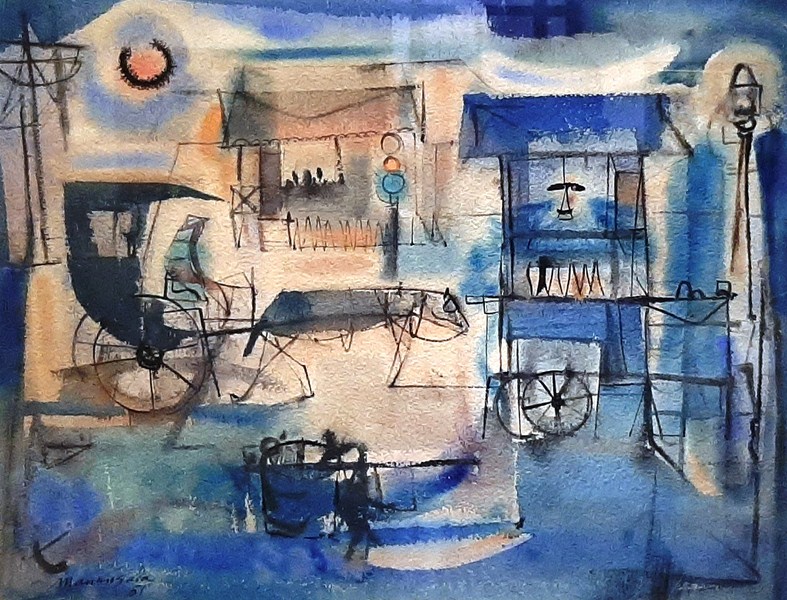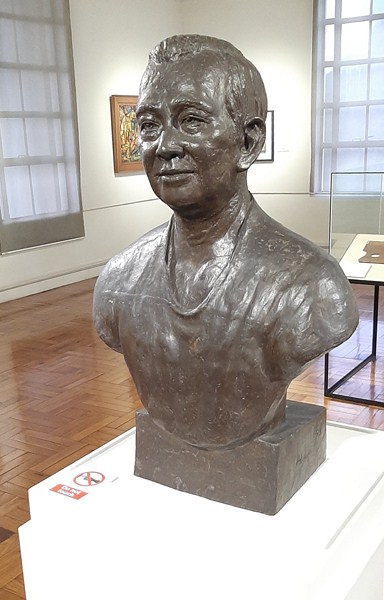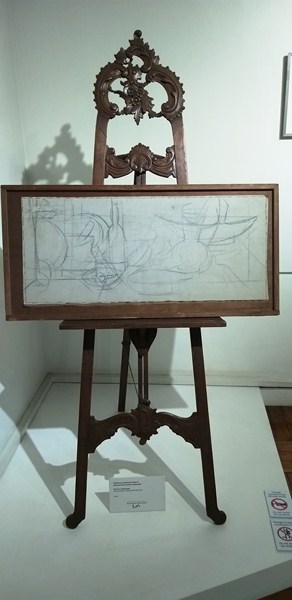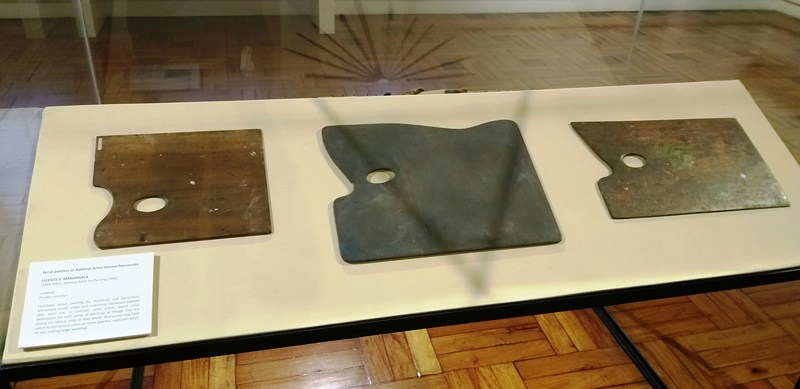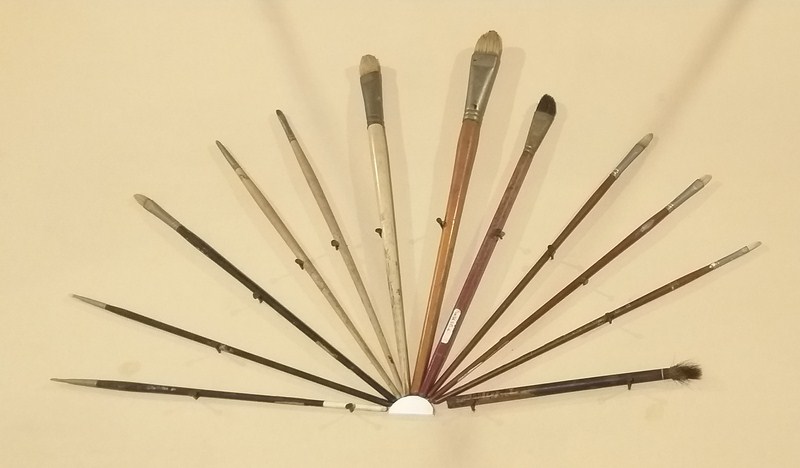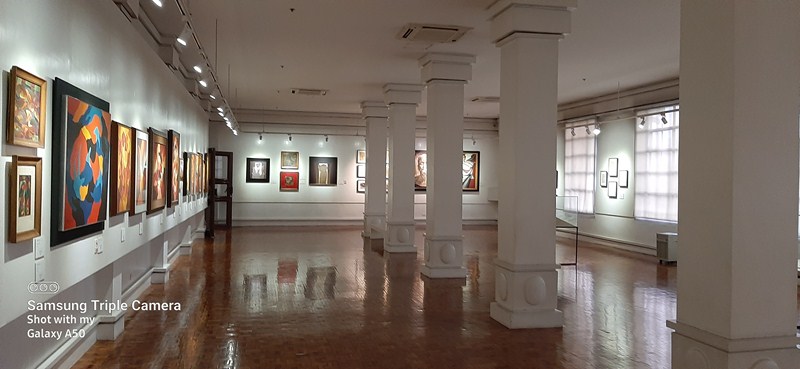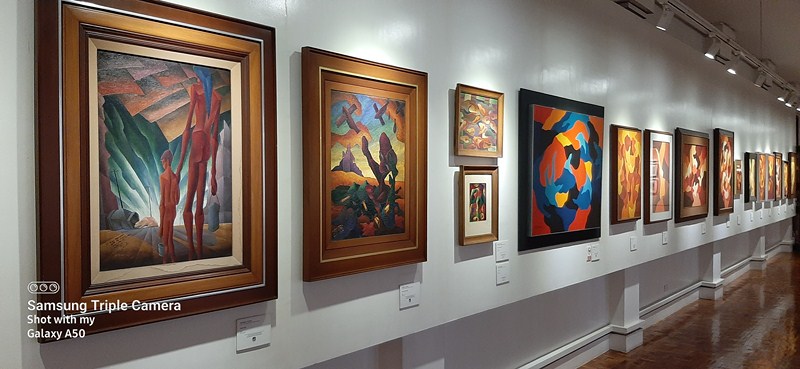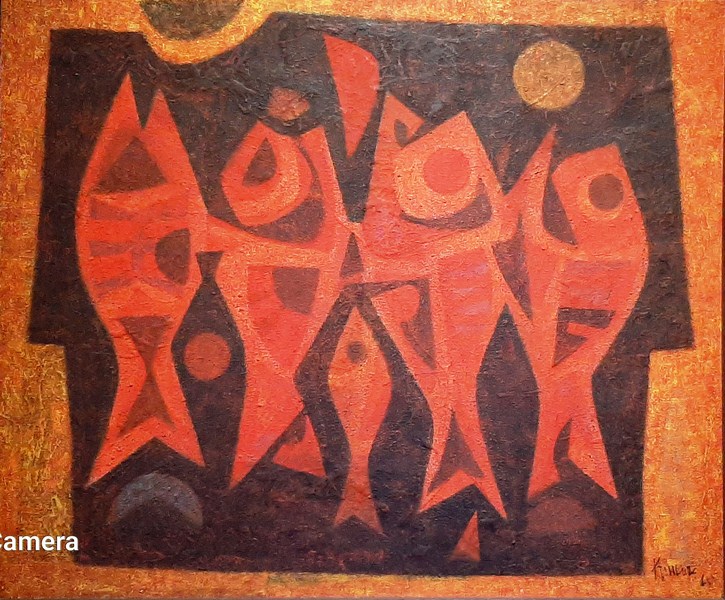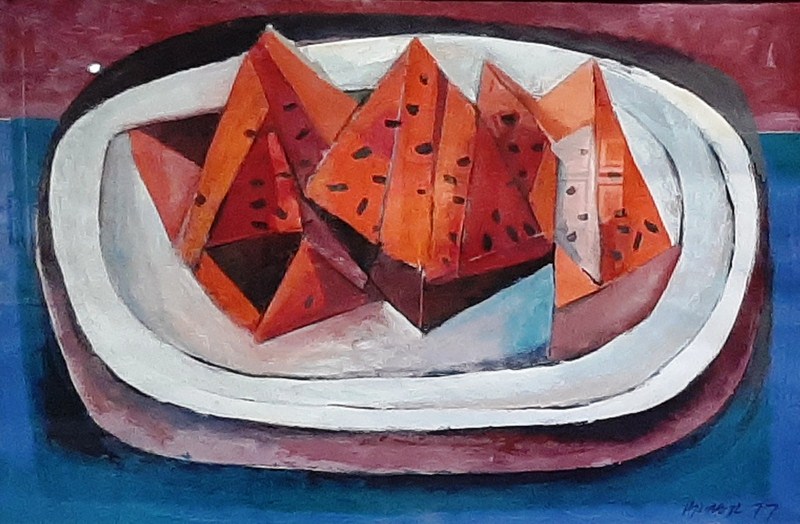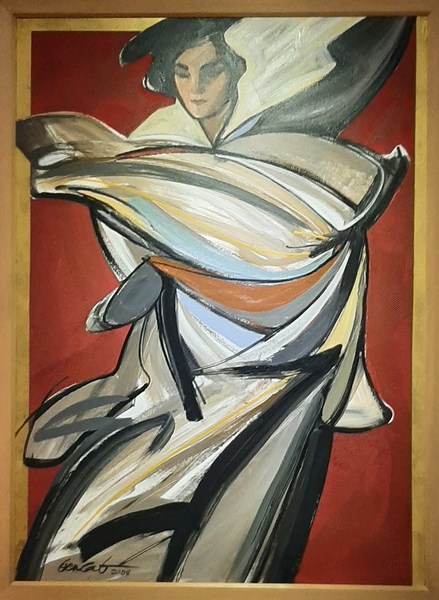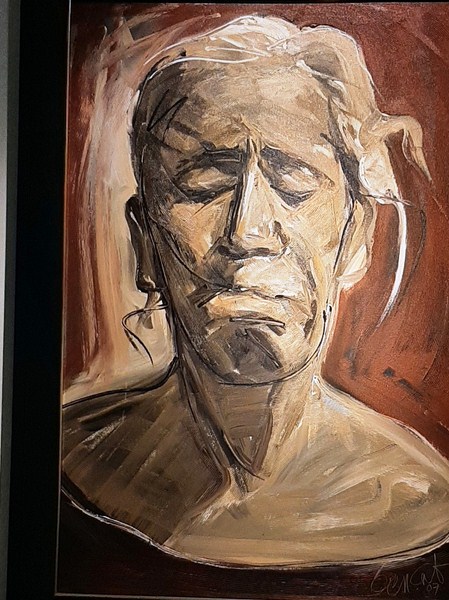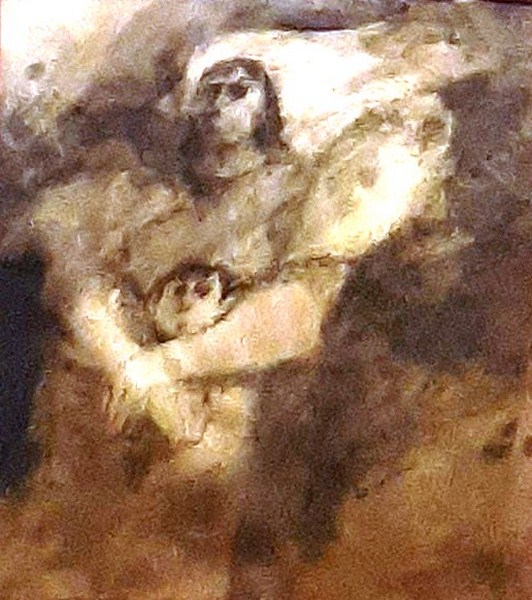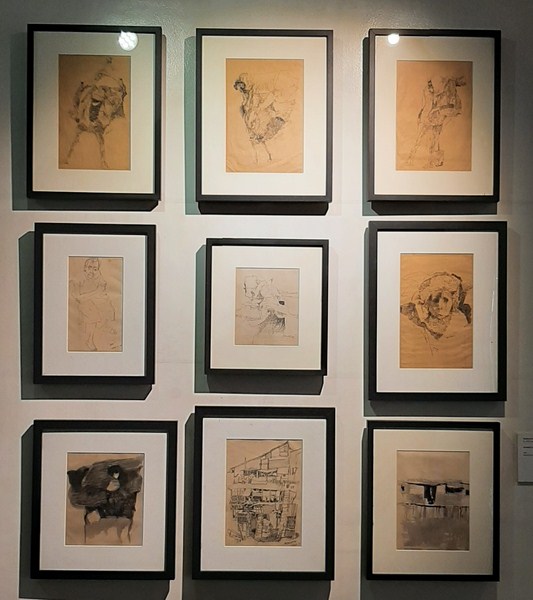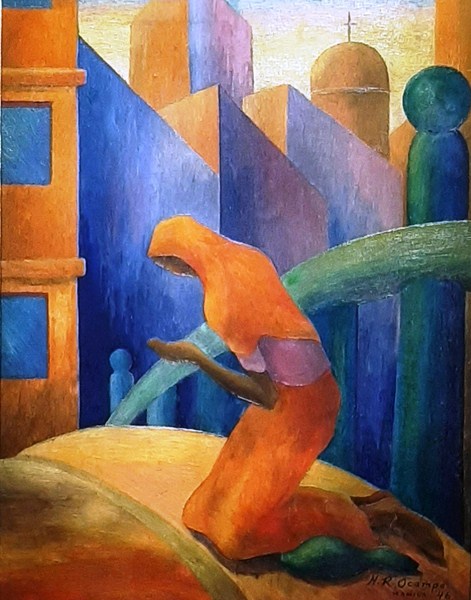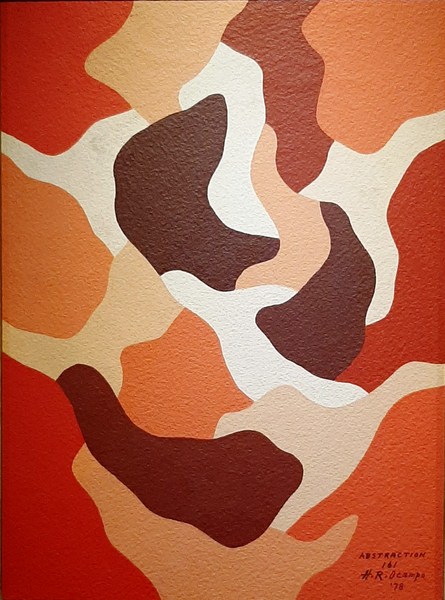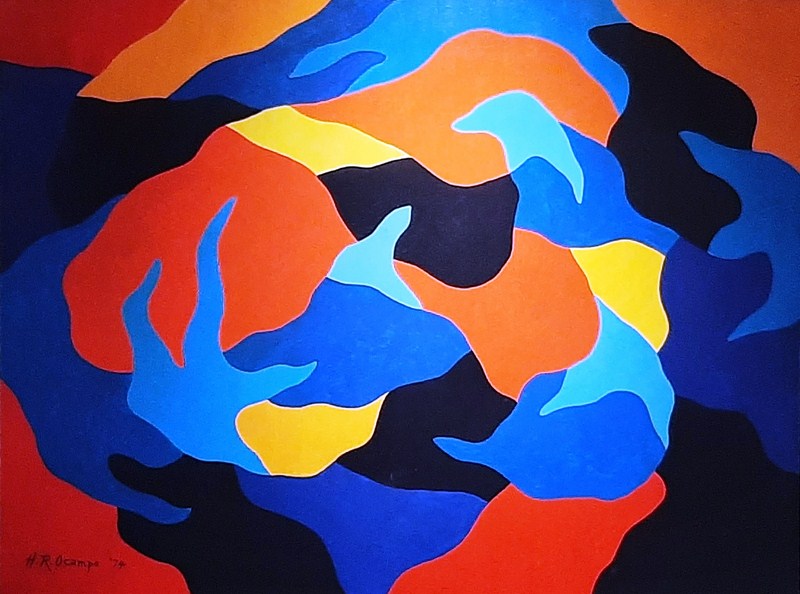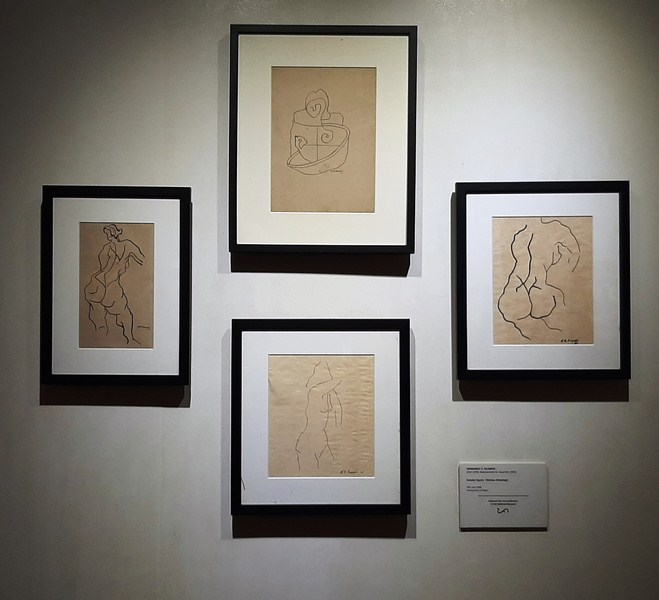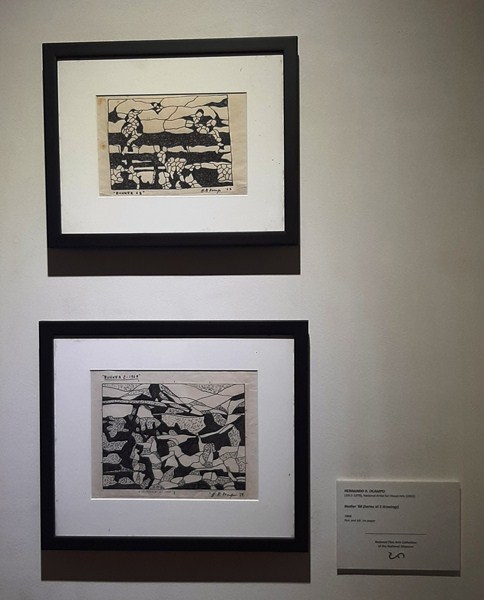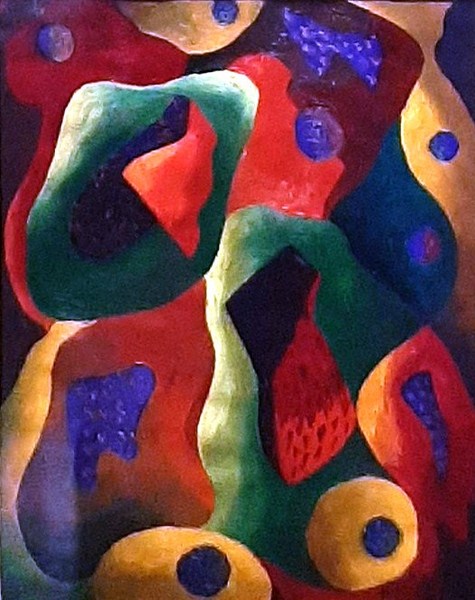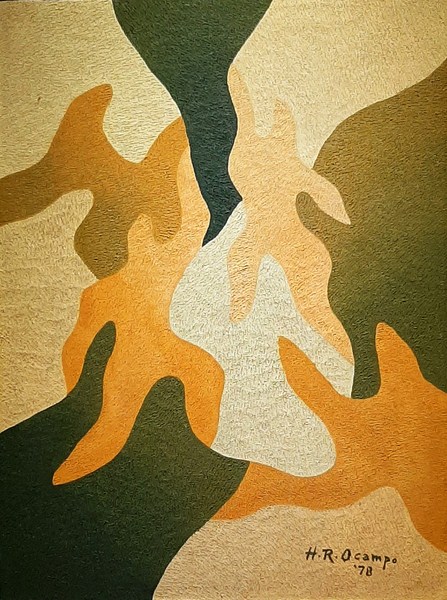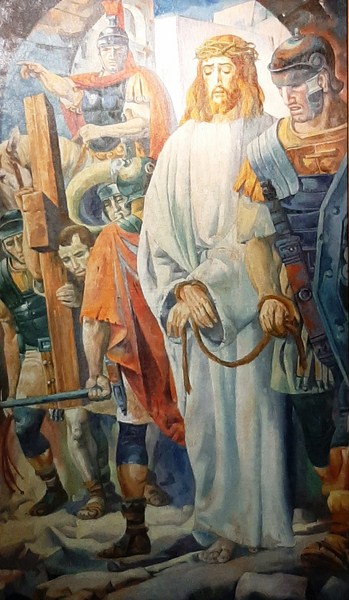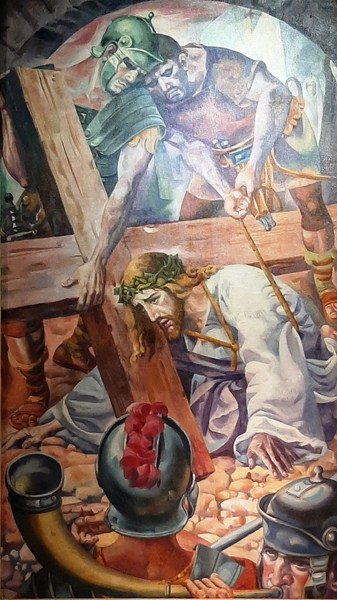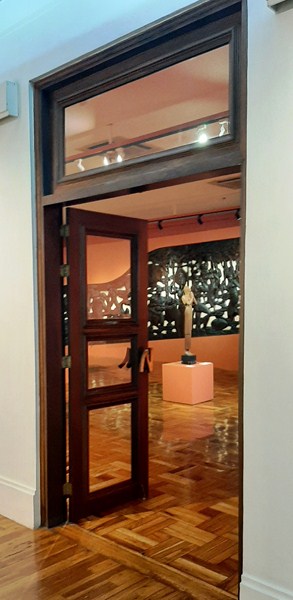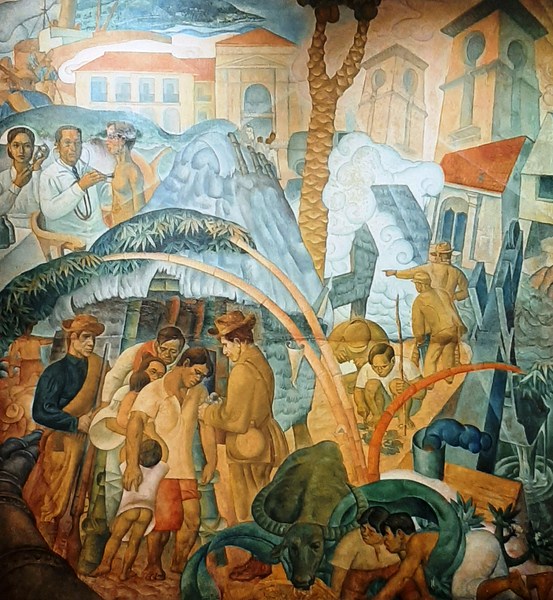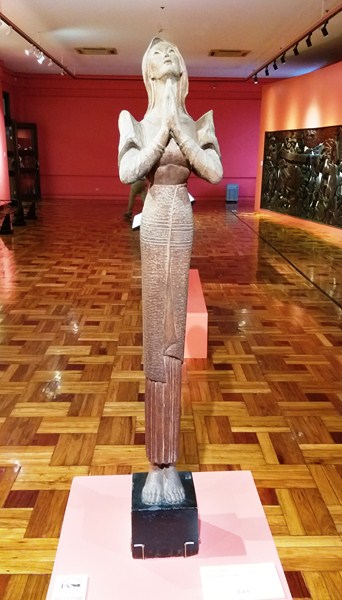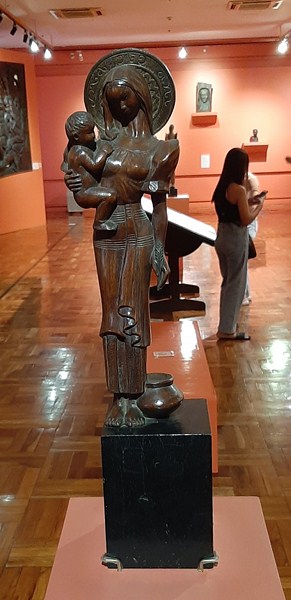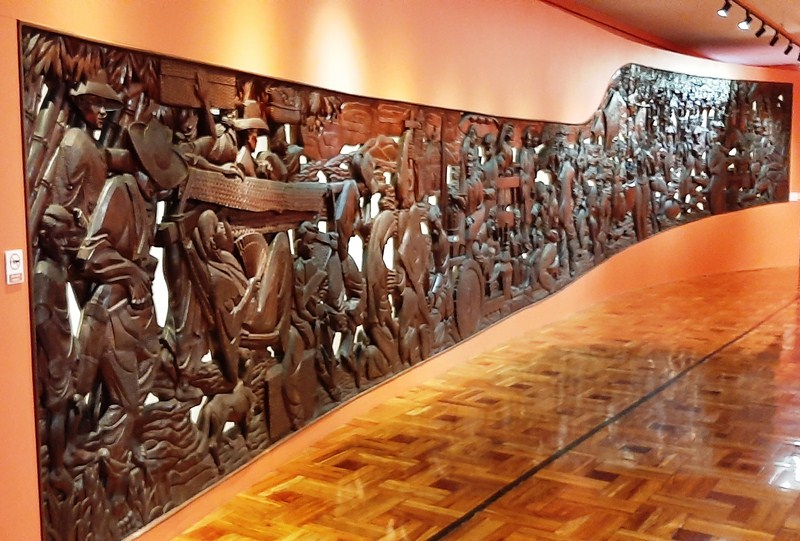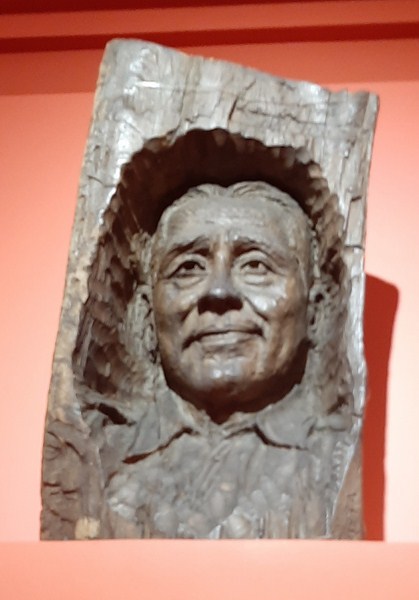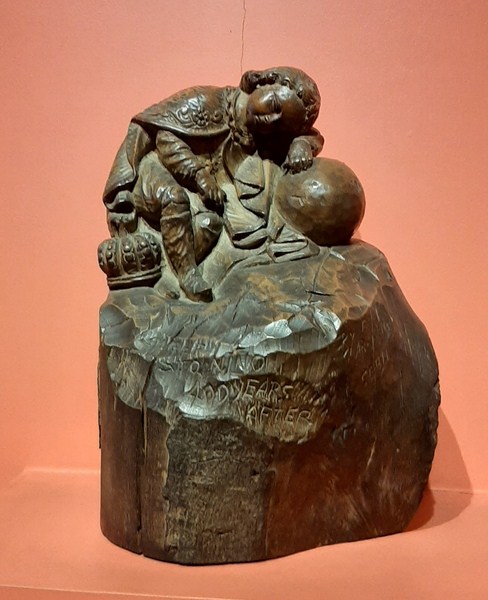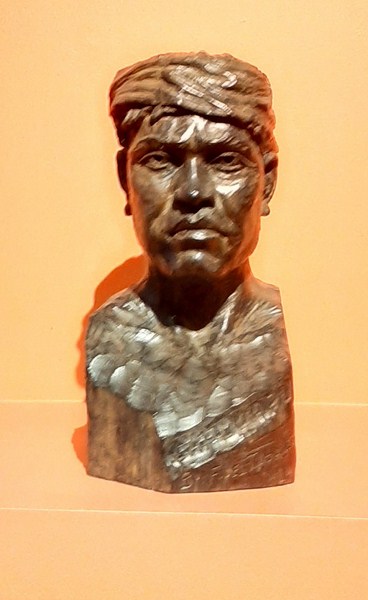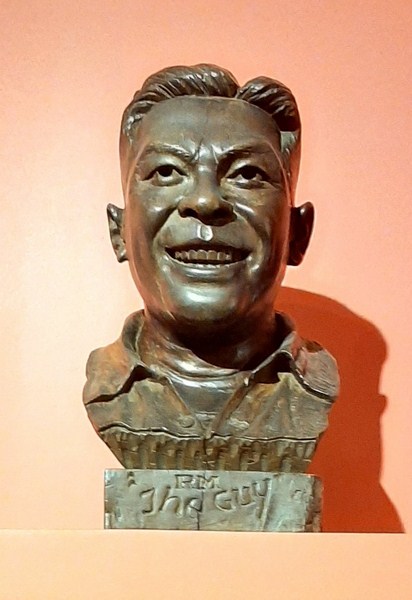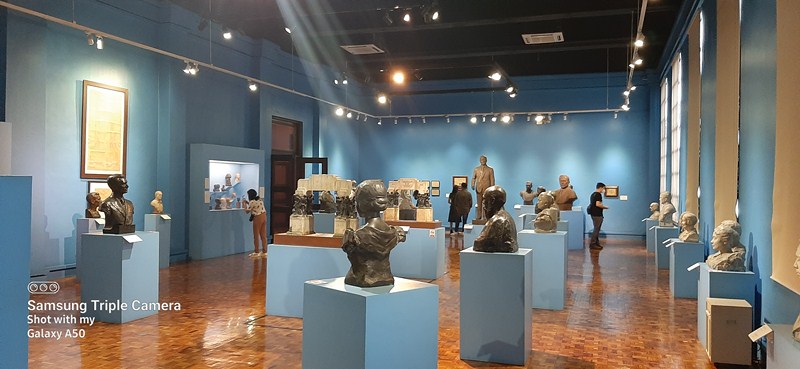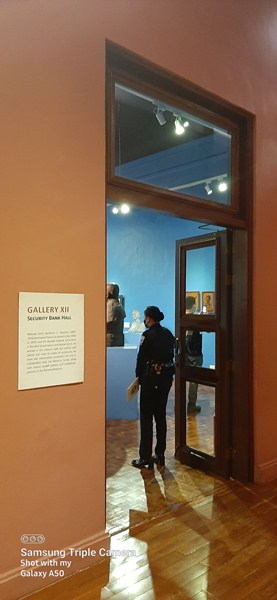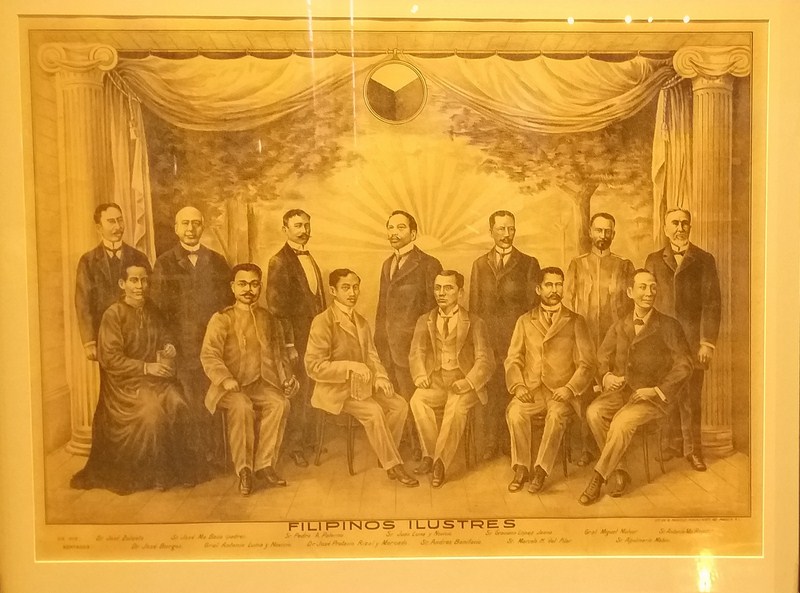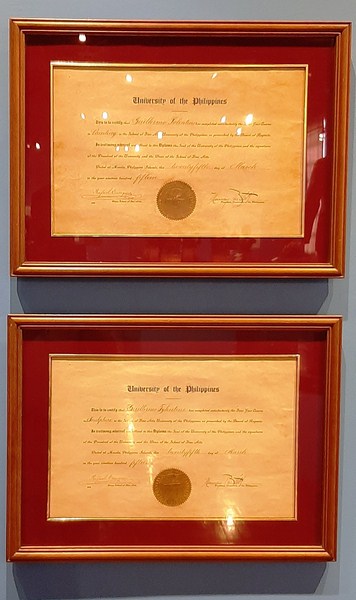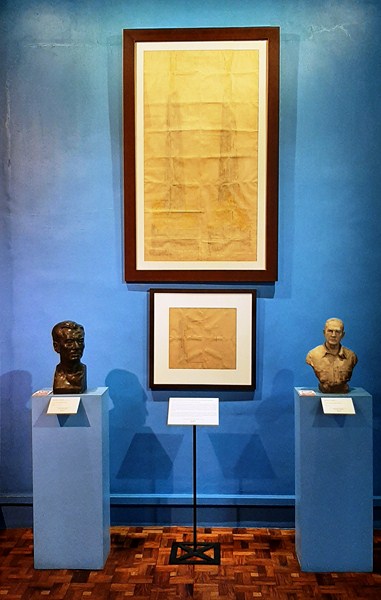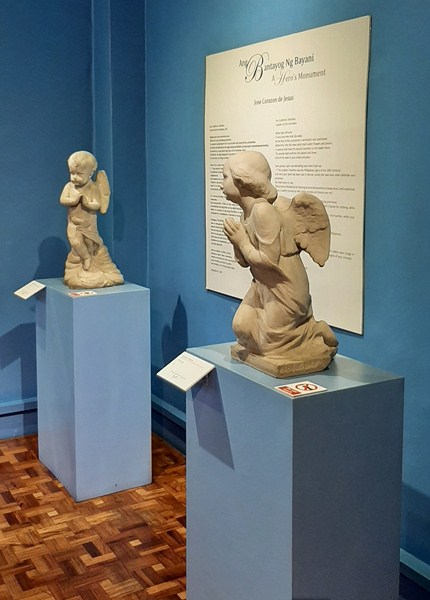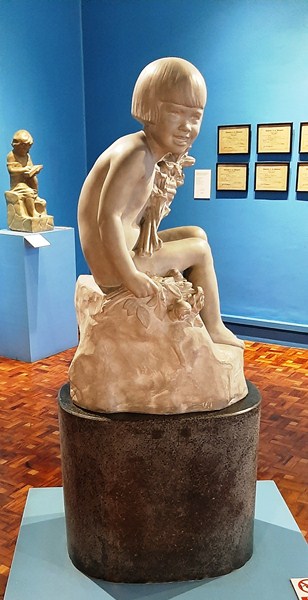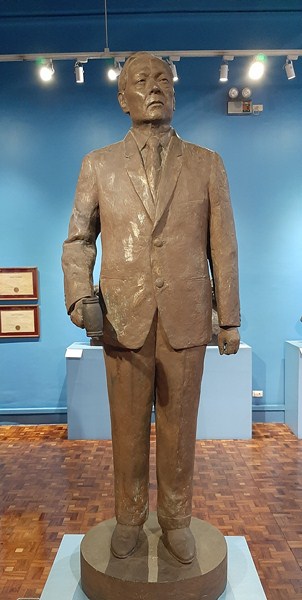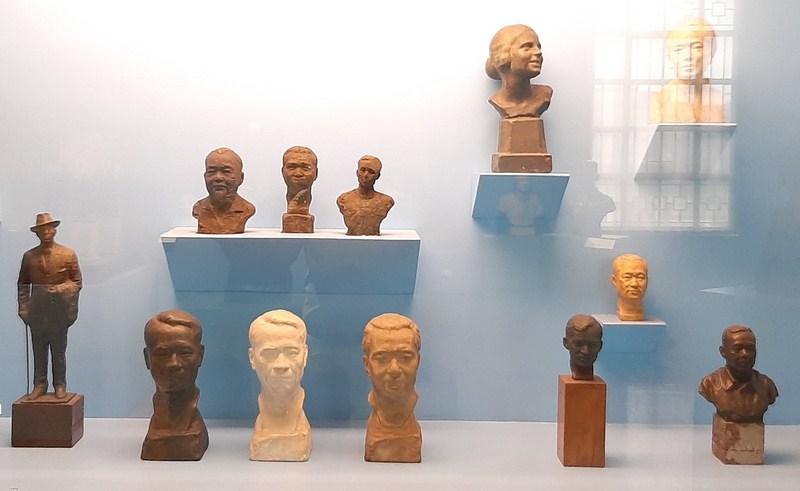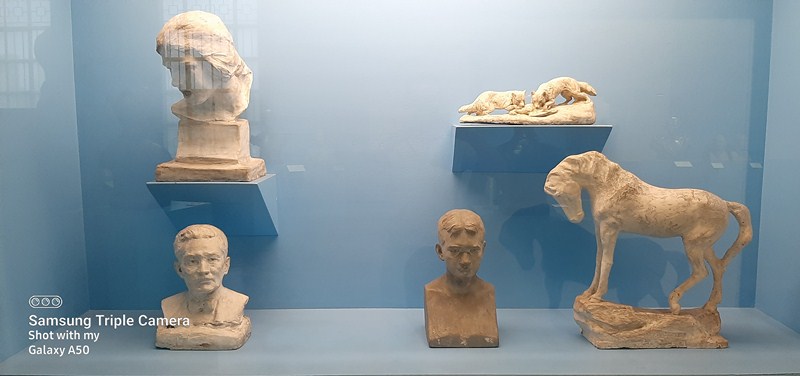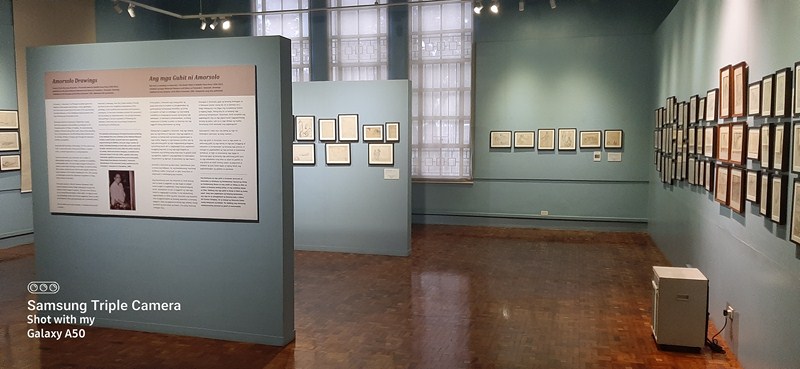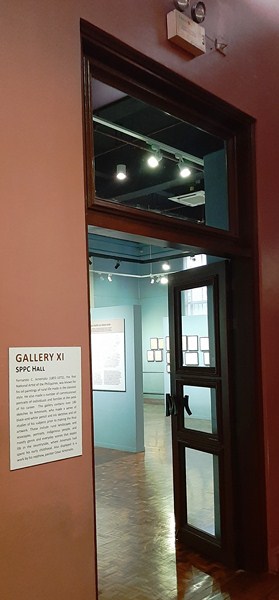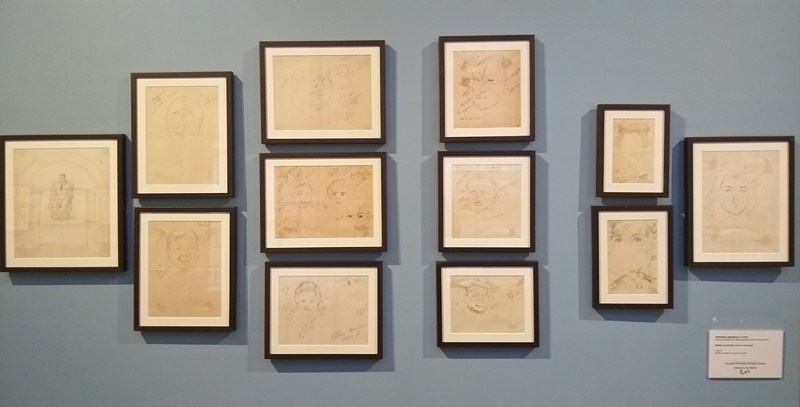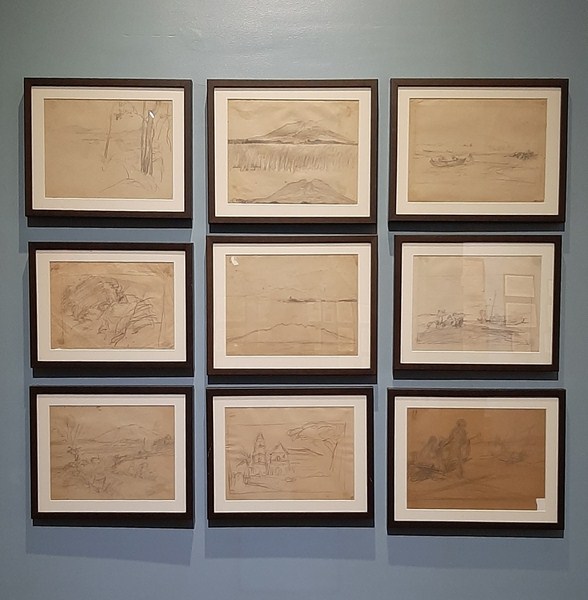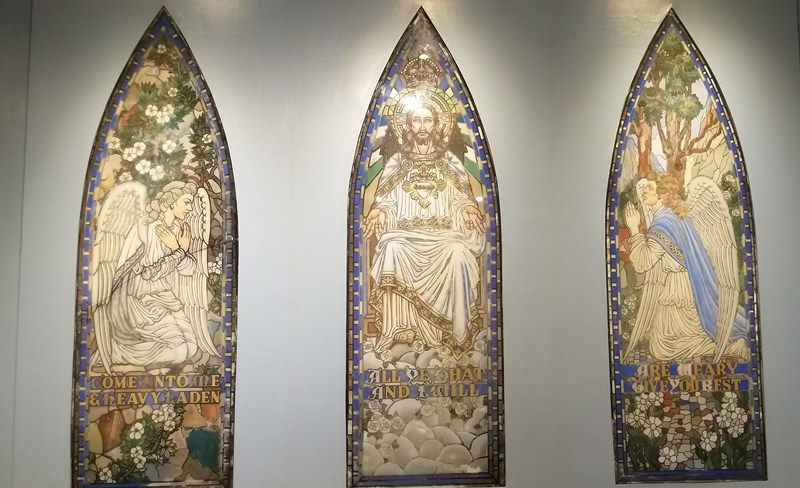When you enter the National Museum of Fine Arts, from Padre Burgos Ave., the first exhibit, at Level Two, you’ll see is the Spoliarium Hall. Guarding its entrance is the reinforced concrete, 2.9 x 1.2 m. winged statue Diwata (a gift from the heirs of Hermogenes Reyes and Teodora Tantoco Reyes), sculpted by National Artist for Sculpture Guillermo Tolentino sometime in the 1950s.
Check out “National Museum of Fine Arts”
The Spoliarium Hall was formerly the House of Representatives Session Hall, site of the 1934 Constitutional Convention. It is home to Filipino painter Juan Luna’s Spoliarium. The largest painting in the Philippines, it measures 4.22 m. high and 7.675 m. wide.
Working on canvas and upon the instigation of Francisco de Paula Redoreda, it took Juan Luna eight months to paint this enormous and massive multi-figure mural which was rendered in frenzied fin de siecle brushstrokes. In 1884, this renowned painting was awarded, by the elitist Salon des Beaux Arts, the first gold medal (grande prix), out of three, at the Exposición Nacional de Bellas Artes in Madrid.
It depicts a despoiling scene in a Roman circus where dead gladiators, being mourned by relatives, are stripped of weapons and garments. Jose Rizal identified it as an allusion to the exploitation of the country by Spain. This art achievement underscored the ability of Filipinos to compete with Europeans at their backcourt. It was also a subtle affirmation of the Filipino’s capability to run affairs back home.
In April 1884, together with other works of the Spanish Academy, the Spoliarium was on exhibit in Rome. In 1885, after being exhibited in Rome, Madrid and Paris, the painting was sold to the provincial government of Barcelona (Diputación Provincial de Barcelona) for 20,000 pesetas.
In 1887, it was transferred to the Museo del Arte Moderno in Barcelona where it was in storage until, in 1937, the museum was burned and looted during the Spanish Civil War. Under orders of Generalissimo Francisco Franco, the damaged painting was sent to Madrid for restoration, where it stayed for 18 years. In the 1950s, calls for the painting’s transfer to Manila by Filipinos and sympathetic Spaniards, led to Gen. Franco’s orders to finish the painting’s restoration and eventual donation to the Philippines.
After the restoration work was completed in late 1957, the painting was broken up into three pieces because of its size, with each piece going into its own shipping crate. In January 1958, the painting was turned over to Ambassador Manuel Nieto, Sr. as a gift from the government of Spain.
The painting was mounted on a wooden frame at the then Department of Foreign Affairs building (as of June 2020, currently the Department of Justice building) along Padre Faura Street. Carlos da Silva, as head of the Juan Luna Centennial Commission, chose artist Antonio Dumlao to perform relining and cleaning of the painting. Carlos da Silva did the mounting, framing and architectural work. In December 1962, the newly restored Spoliarium was then unveiled in the Hall of Flags of the Department of Foreign Affairs.
In 1982, the painting was cleaned by Suzanno “Jun” Gonzalez and, in 2005, another restoration was made by Art Restoration and Conservations Specialists Inc., headed by painter June Poticar Dalisay.
Across it is the equally violent The Assassination of Governor Bustamante and His Son (El asesinato del Gobernador Bustamante), the most extensive work by another Filipino 19th century master painter, Félix Resureccion-Hidalgo (February 21, 1855-March 13, 1913), Luna’s contemporary and friend, who won the silver medal for his Las Virgenes Cristianas Expuestas Al Populacho at the same Exposición Nacional de Bellas Artes in Madrid. Circa 1853, it is also known under the more controversial title La Iglesia contra el estado (The Church against the State).
The 412 cm. (13.5 ft.) high and 338 cm. (11 ft.) wide oil on canvas painting, commissioned by Don Antonio Ma. Regidor (who never took hold of it), a Filipino nationalist, shows 18th century halberds (the 19th century halberds may have become more elaborate compared to those featured in this historical painting of the event that took place in 1719) being used by the Alaberderos (a special unit of bodyguards) belatedly coming to the rescue of the fallen Governor-General Fernando Manuel de Bustillo Bustamante.
In 1905, this painting was first exhibited at the St. Louis Exposition in the United States of America where it won a gold medal. The painting remained in Barcelona until 1914 when the painting was brought back to the Philippines by one of Regidor’s relatives. In 1965, the painting came into the possession of Mr. Manuel Lazatin Garcia and, in 1971, it was transferred to the residence of architect Leandro Locsin for safekeeping. In 1974, in time for the celebration of Museum Week, the painting was unveiled at the National Museum.
Both paintings were declared as National Cultural Treasures. Perpendicular to these two iconic paintings is the Arthur Walsh Fergusson Monument and the Battle of Mactan by Elmer Borlongan. The former, the grandest and only monument in the Philippines dedicated in honor of an American bureaucrat, was completed in Madrid and Barcelona in 1912 by the eminent Spanish sculptor Mariano Benlliure (1862-1947) and was formally inaugurated in Manila on November 15, 1913.
Known for his Neo-Classic public monuments in Madrid and elsewhere, Benlliure, and his brother Jose, were classmates (from 1881 to 1884) of Filipino artists Juan Luna, Félix Resurreccion-Hidalgo and Miguel Zaragoza at the Spanish Academy in Rome.
Fergusson, a Spanish-speaking colonial bureaucrat, served as secretary of the First Philippine Commission and later as secretary to a succession of governors-general from 1901 until he died from cardiac arrest in 1908. This bronze monument, on a Carrara marble plinth monument, was originally located in a small plaza (then known as Plaza Fergusson) fronting Ermita Church.
The monument was replaced by a bronze representation of the Virgin of Ermita, by the late Eduardo Castrillo, and the name of the plaza was changed to Plaza del Nuestra Señora de Guia (later renamed Plaza Guerrero to honor the Filipino poet Fernando Ma. Guerrero). The Fergusson Monument was given to the US Embassy who loaned it to the National Museum of the Philippines for preservation and access to the public.
The large-scale (2.4 x 4.8 m.) Battle of Mactan” was painted by contemporary visual artist Elmer “Emong” Borlongan (who used predominantly red and blue pigments for this artwork) in 2021 to mark the 500th Anniversary of Ferdinand Magellan’s circumnavigation of the world and arrival in the Philippines.
Also on display are two halberds, the only examples of their kind known to exist in the country. Officially used in the service of the Governor and Captain General between 1874 and 1898, they were taken as souvenirs by American troops and brought to the US, eventually entering the collection of Parkin Archaeological State Park (Arkansas) who, in 2016, donated them to the National Museum of the Philippines.
Spoliarium Hall: 2/F, National Museum of Fine Arts (NMFA), Padre Burgos Avenue, Ermita, Manila 1000, Metro Manila. Tel: (632) 8527-1215 and (632) 8298-1100. Email: inquiry@nationalmuseum.gov.ph. Website: nationalmuseum.gov.ph. Open Tuesdays to Sundays, 9 AM – 4PM. Admission is free. Coordinates: 14°35′13″N 120°58′52″E.

